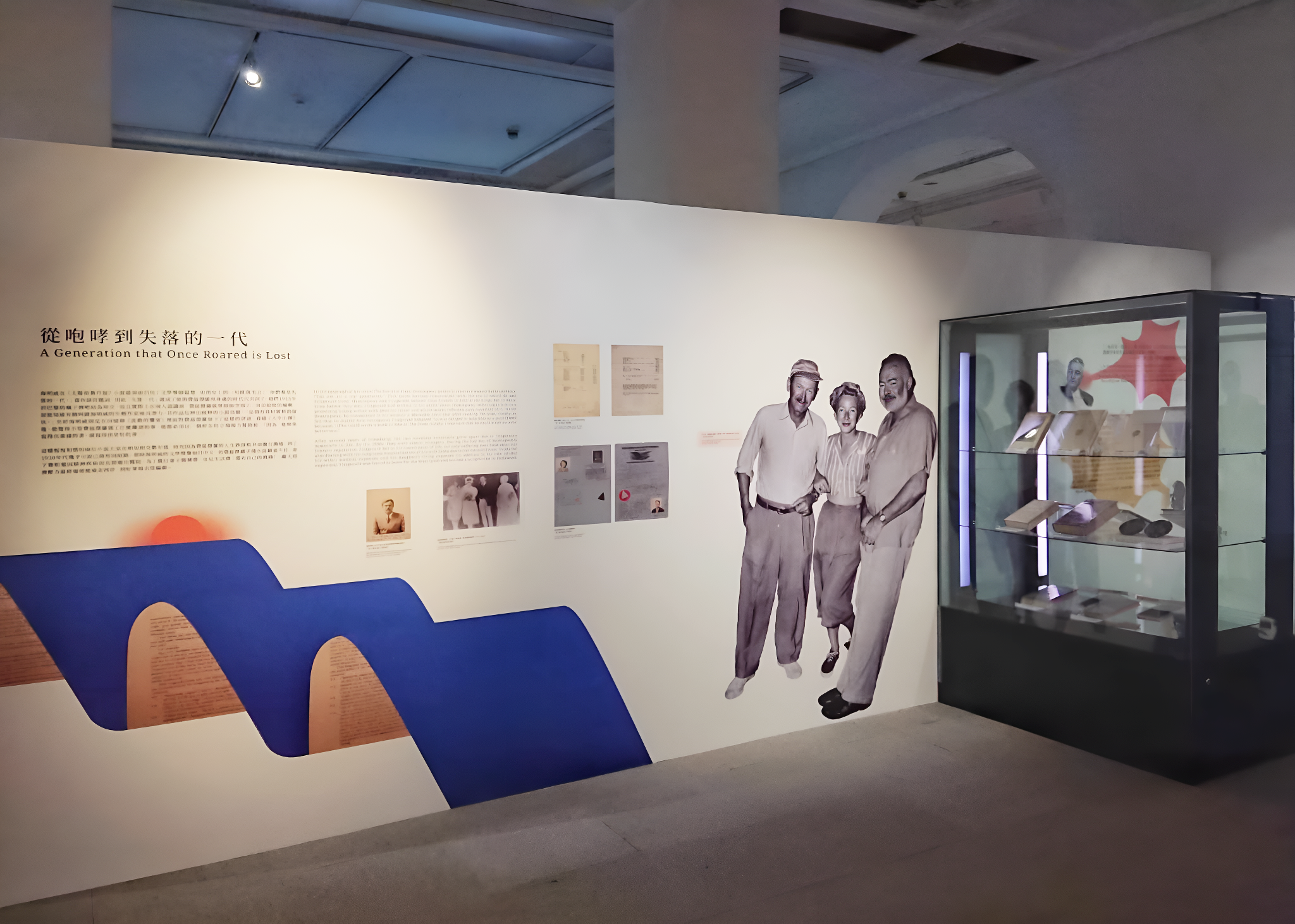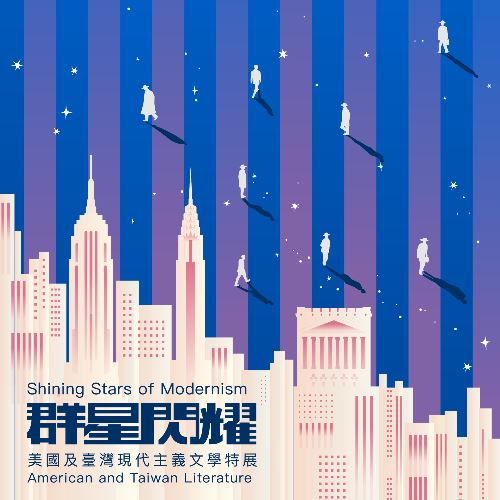✧ F. Scott Fitzgerald: The Tycoon of a Roaring Era ✧ William Faulkner: Submerged in the Stream of Consciousness
✧ Ernest Hemingway: The Passionate and Lonely Adventurer ✧ A Generation that Once Roared is Lost
✧ Hemingway's Literary Travels Around the World ✧

F. Scott Fitzgerald:
The Tycoon of a Roaring Era
After the war, F. Scott Fitzgerald experienced the Prohibition era of American society. Nevertheless, drinking parties and celebrations were everywhere as people reveled in the then-economic boom. In this period later known as "The Roaring Twenties," anyone could achieve the "American Dream." American society and its economy soared with blinding speed. This ascent, however, abruptly turned into a nosedive when the stock market crashed in 1929, plunging the entire nation into the Great Depression. Fitzgerald's novels The Great Gatsby and Tender Is the Night, as well as his essay "Echoes of the Jazz Age" published in 1931, can all be considered important documents, if not historical records, for examining the 1920s. Both novels feature protagonists hailing from the American Midwest. Feeling out of place in the upper-class society they inhabited, both characters viewed the world around them from an outsider's perspective. In a sense, these portrayals reflected Fitzgerald's own state of mind, as he himself was originally a poor boy from St. Paul, Minnesota who suffered a decline in family fortune. 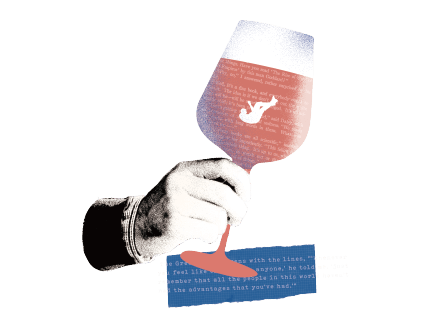
Show me a hero, and I'll write you a tragedy.
——From F. Scott Fitzgerald's Notebook
As an incidental frequent guest in high society, Fitzgerald not only depicted love affairs in his works, but also attacked the money worshipping and material civilization of American society. His sarcasm and mockery of the rich, at times laced with a hint of sympathy, fully captured Fitzgerald's view of America's fall from a golden age to the Great Depression and the zeitgeist of this era. One can see this in the absurd couple in The Beautiful and Damned and the materially wealthy yet morally bankrupt East coast affluents in The Great Gatsby. The same themes reappear in Fitzgerald's subsequent novels Tender Is the Night and The Last Tycoon.
… I had developed a sad attitude toward sadness,
a melancholy attitude toward melancholy and a tragic attitude toward tragedy…
——F. Scott Fitzgerald, The Crack-up
After the end of the Jazz Age, Fitzgerald published the essay "My Lost City," in 1932. In it, he portrays New York as having "all the iridescence of the beginning of the world," and describes America as "the most powerful nation, and there was gala in the air." However, Fitzgerald himself lived in a "drab room in the Bronx," dressed in shabby suits. Many of his Princeton University friends "were launching decently into life," but he alone "muscled [an] inadequate bark into midstream." Such lines fully express his sentiments of residing within a bustling city, and yet feeling isolated and excluded from it. As the literary spokesperson of the American Jazz Age, Fitzgerald's creative process was deeply influenced by that historical period.

◪ F. Scott Fitzgerald's debt circa 1935-1936
(Courtesy of University of South Carolina)
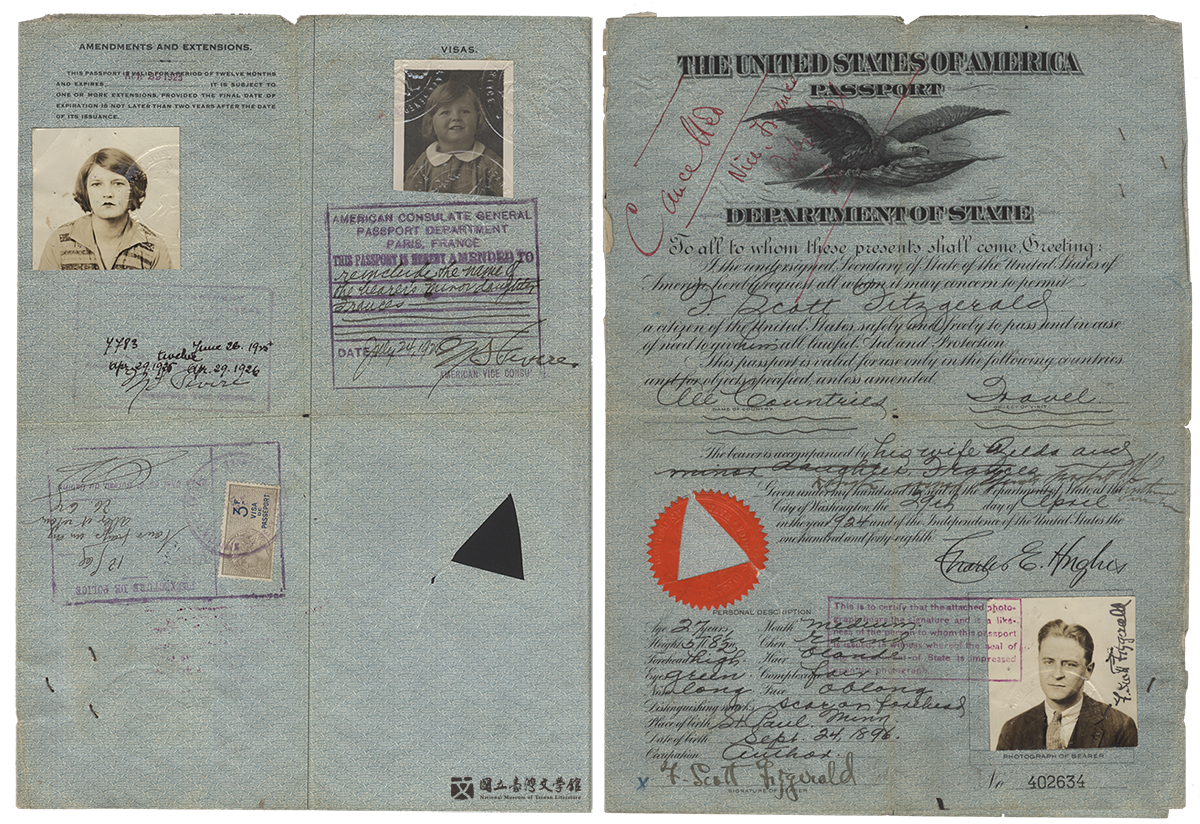
◪ F. Scott Fitzgerald's USA passport
(Courtesy of University of South Carolina)
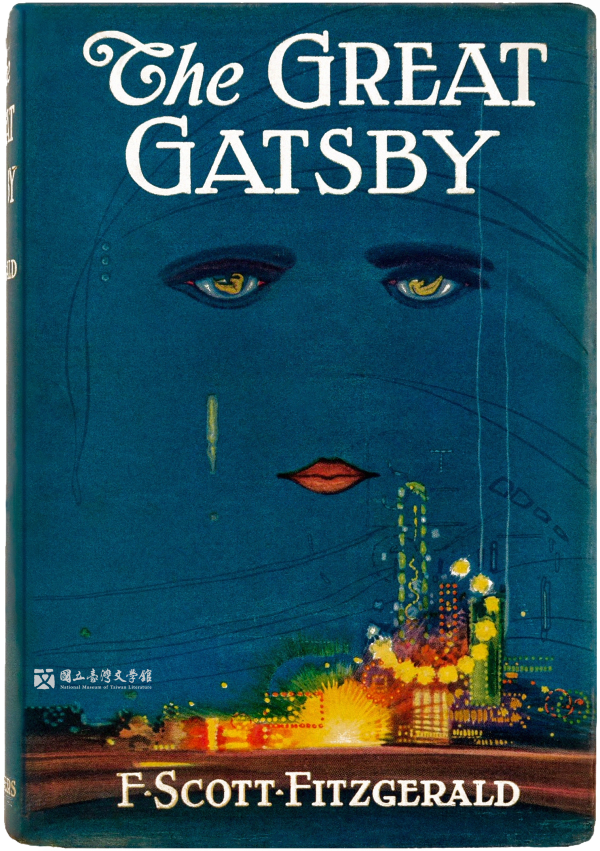
◪ The Great Gatsby by F. Scott Fitzgerald, 1925
Fitzgerald's most famous work and his highest artistic achievement, though it did not sell especially well when published. It has become a classic of American fiction, and almost all students in the US read it. This novel adopts the narrative perspective of a young man from the Midwest, enticing the readers to consider the young man’s voice as Fitzgerald's, and Fitzgerald used him to criticize the so-called Jazz Age, the US society in the 1920s.(Courtesy of University of South Carolina)
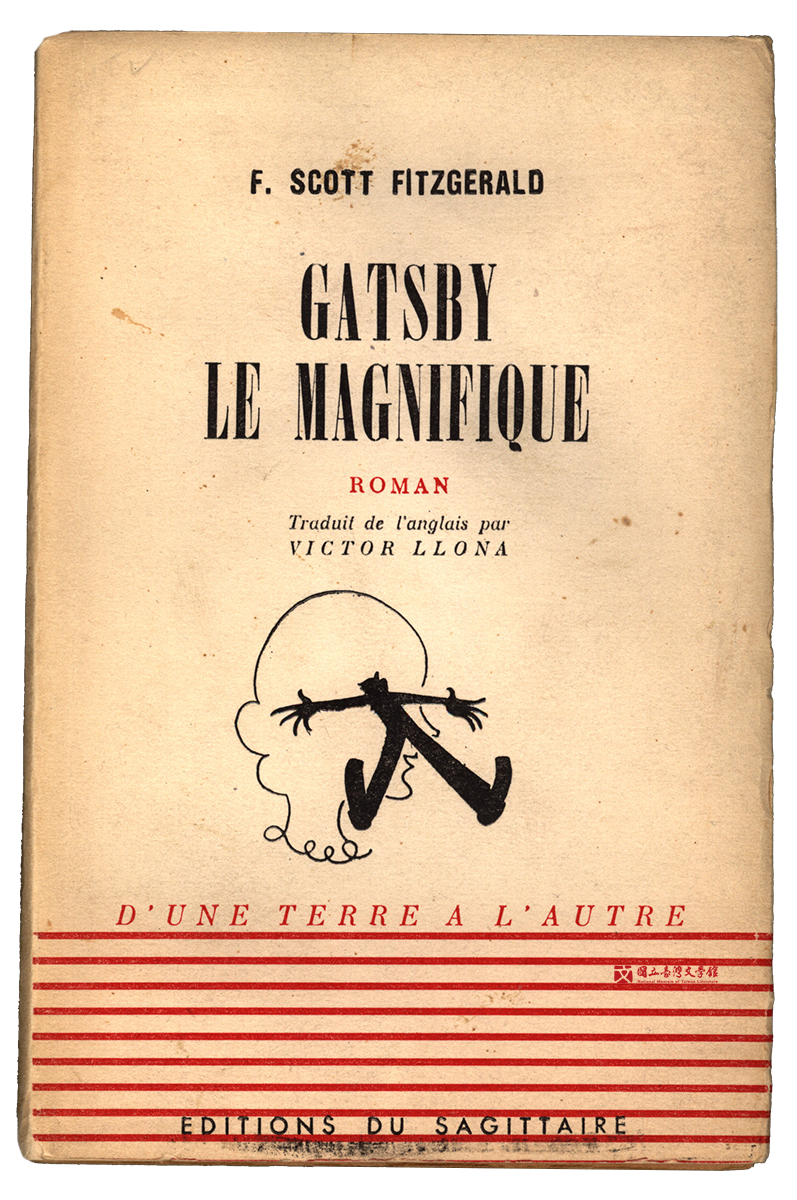
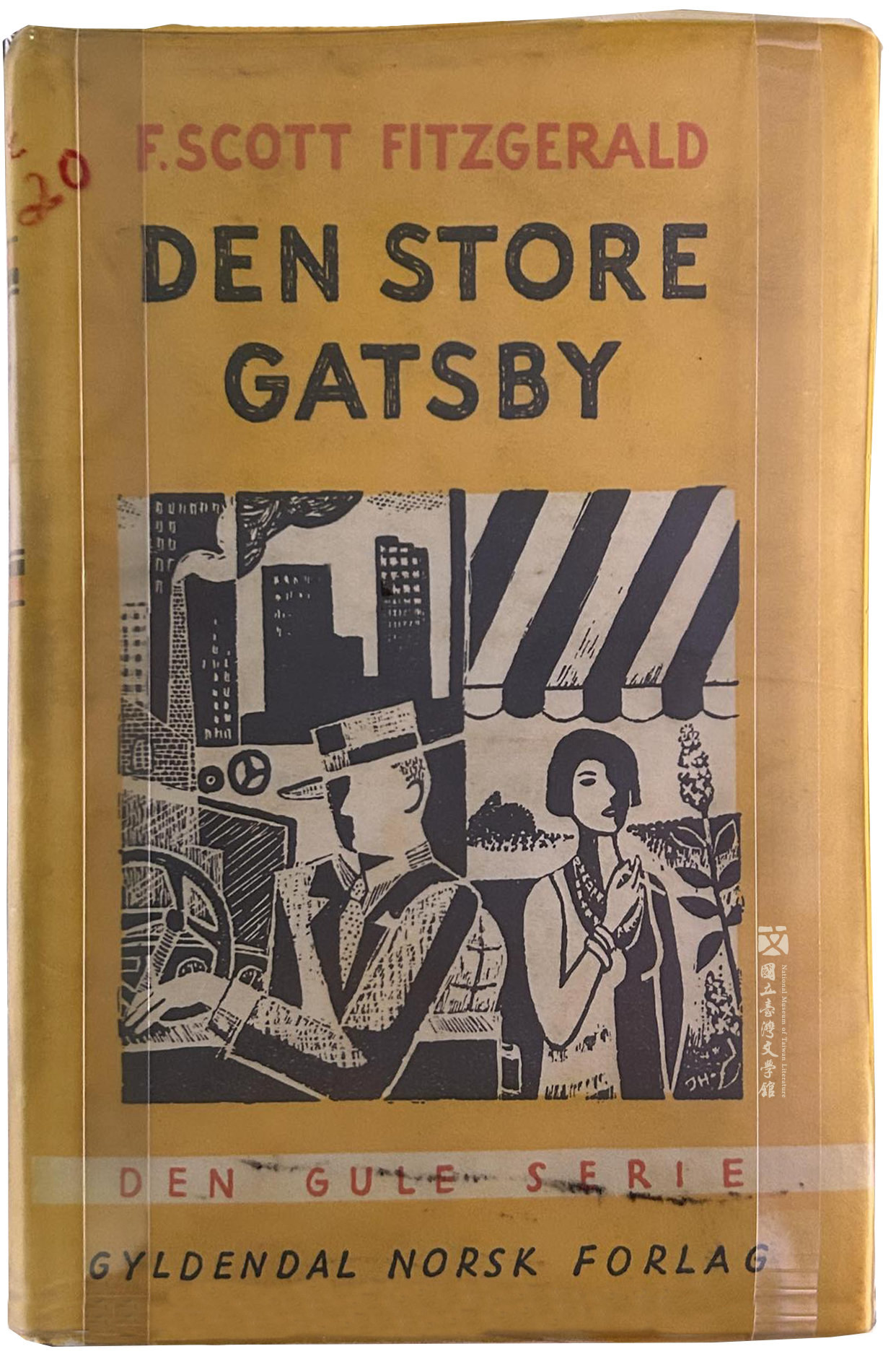

◪ Gatsby le magnifique / Den store Gatsby / Gotsby o maghas
(Courtesy of University of South Carolina)
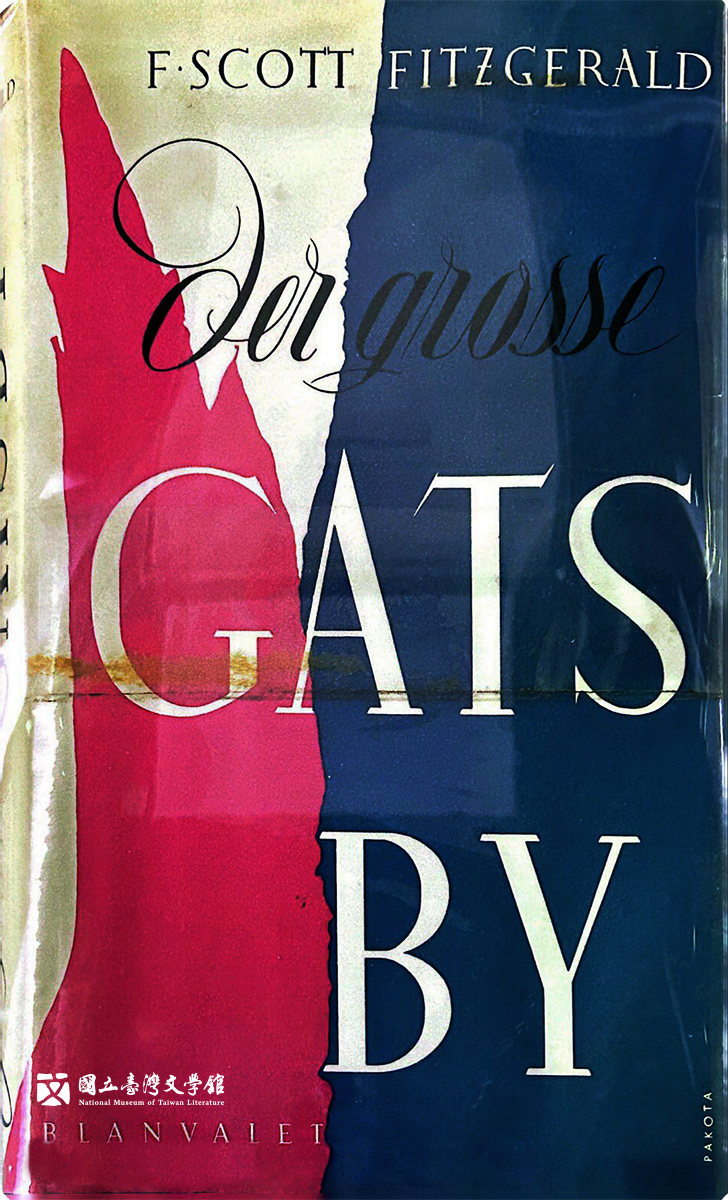
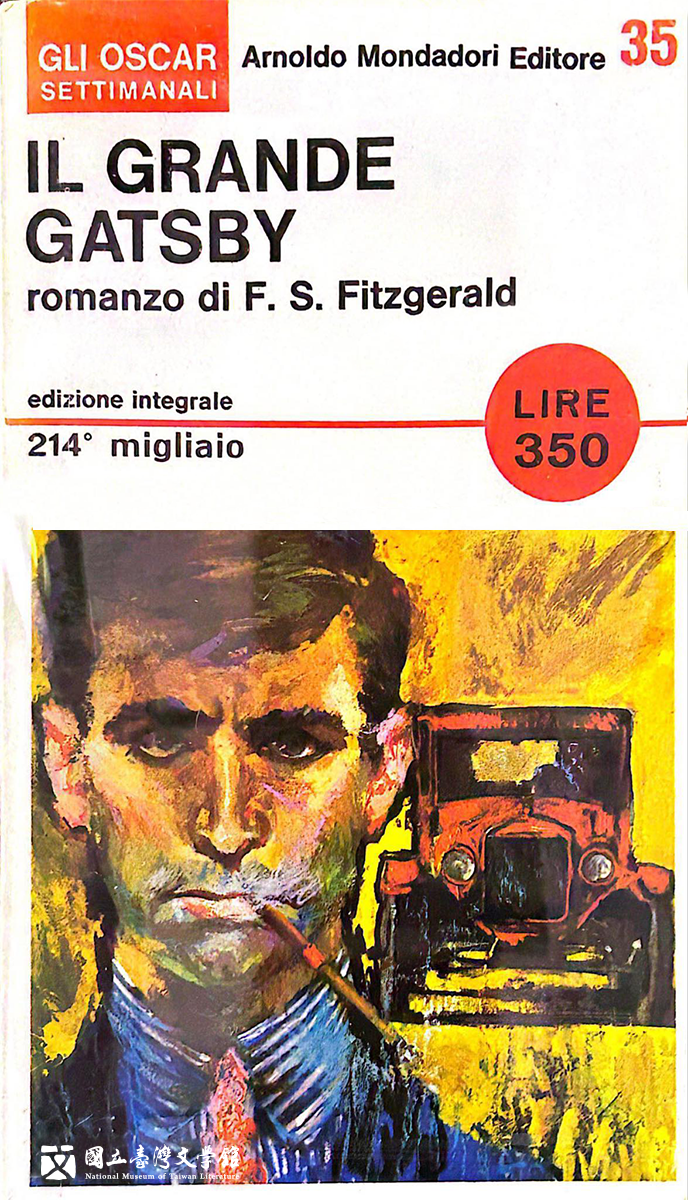
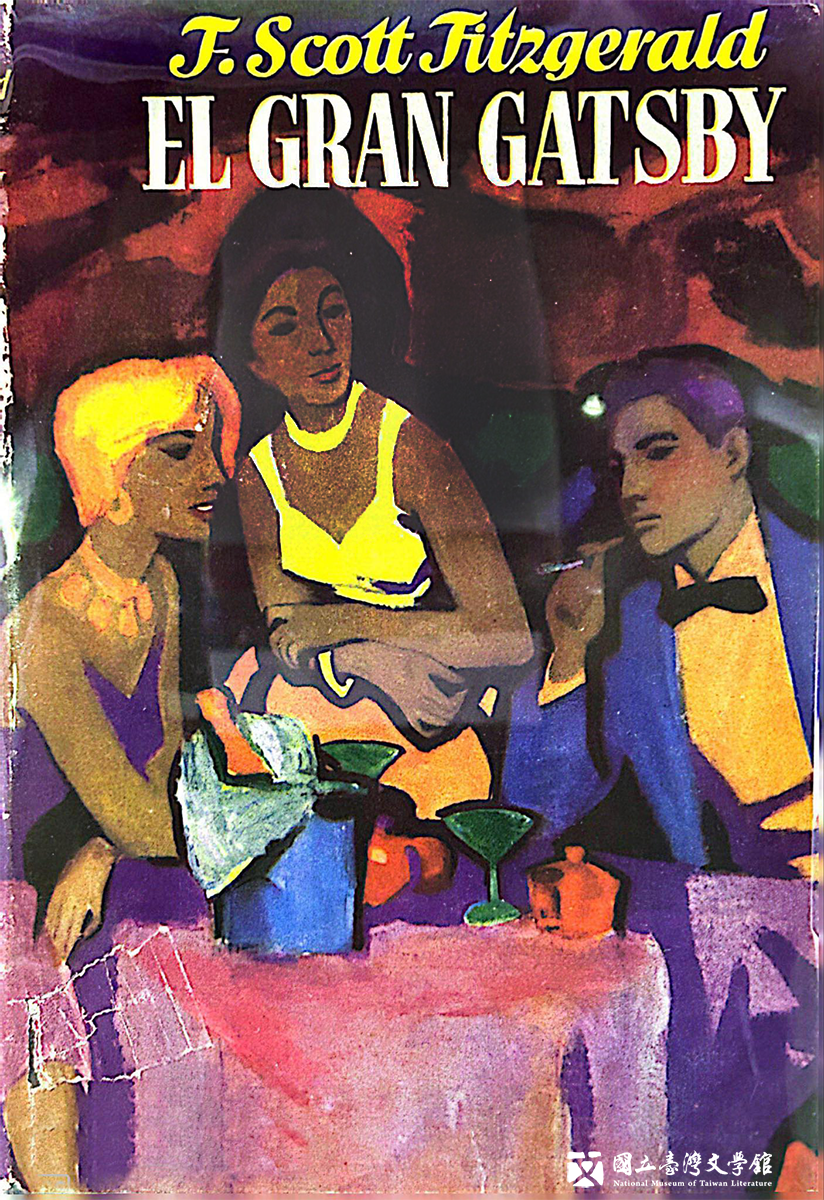
◪ Der grosse Gatsby : roman / Il grande Gatsby / El gran Gatsby
(Courtesy of University of South Carolina)
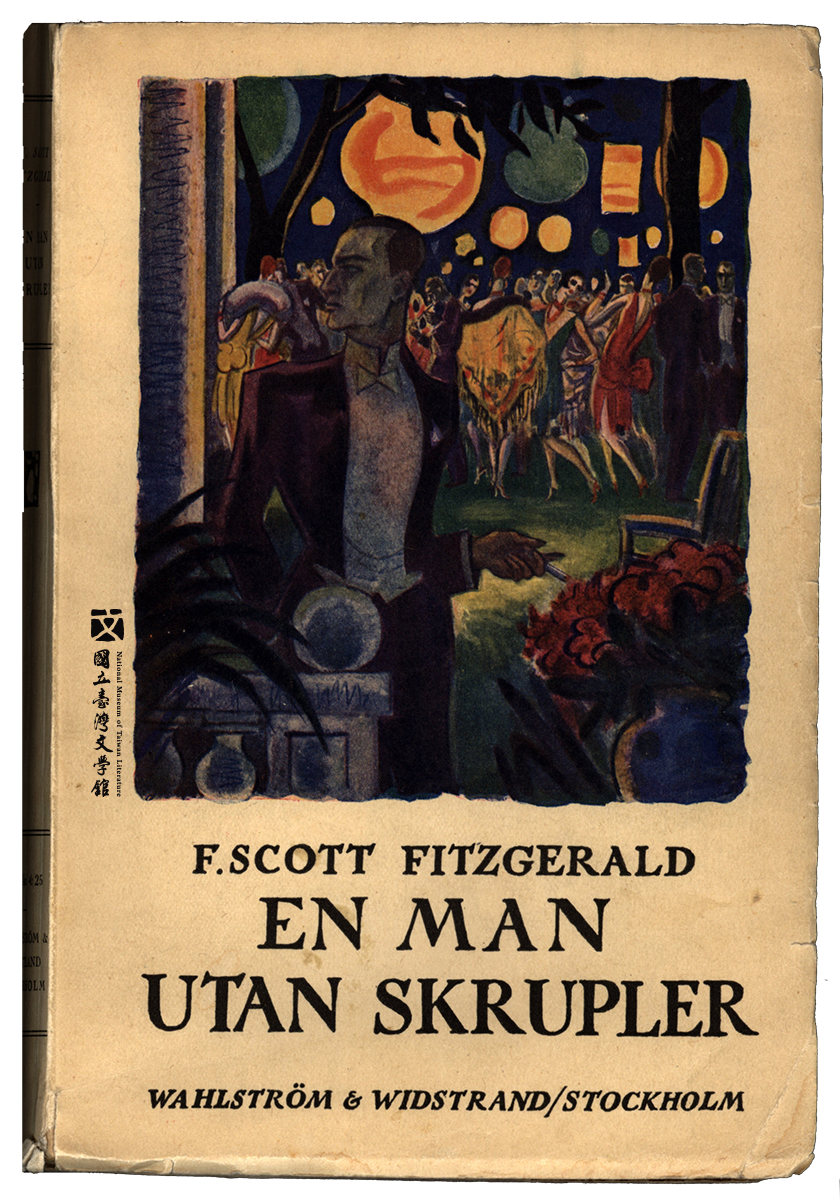
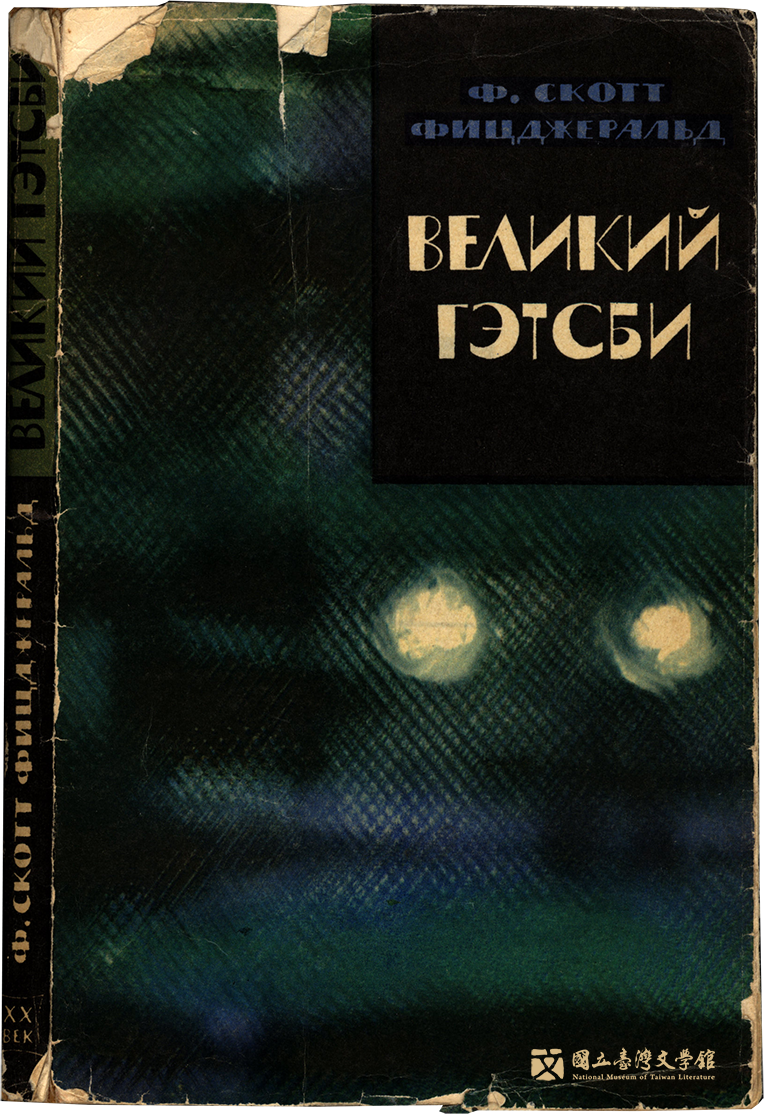
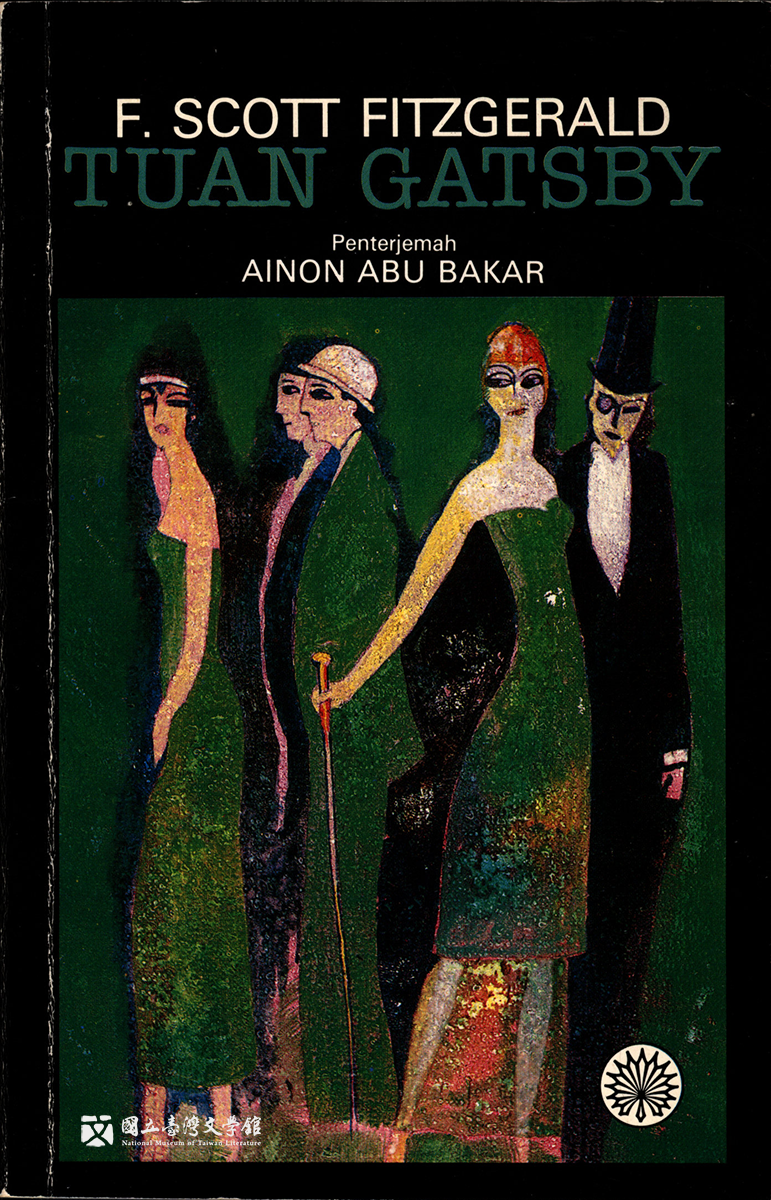
◪ Swedish version cover of The Great Gatsby,1928 / Russian version cover of The Great Gatsby,1965 / Malay version cover of The Great Gatsby,1988
(Courtesy of University of South Carolina)
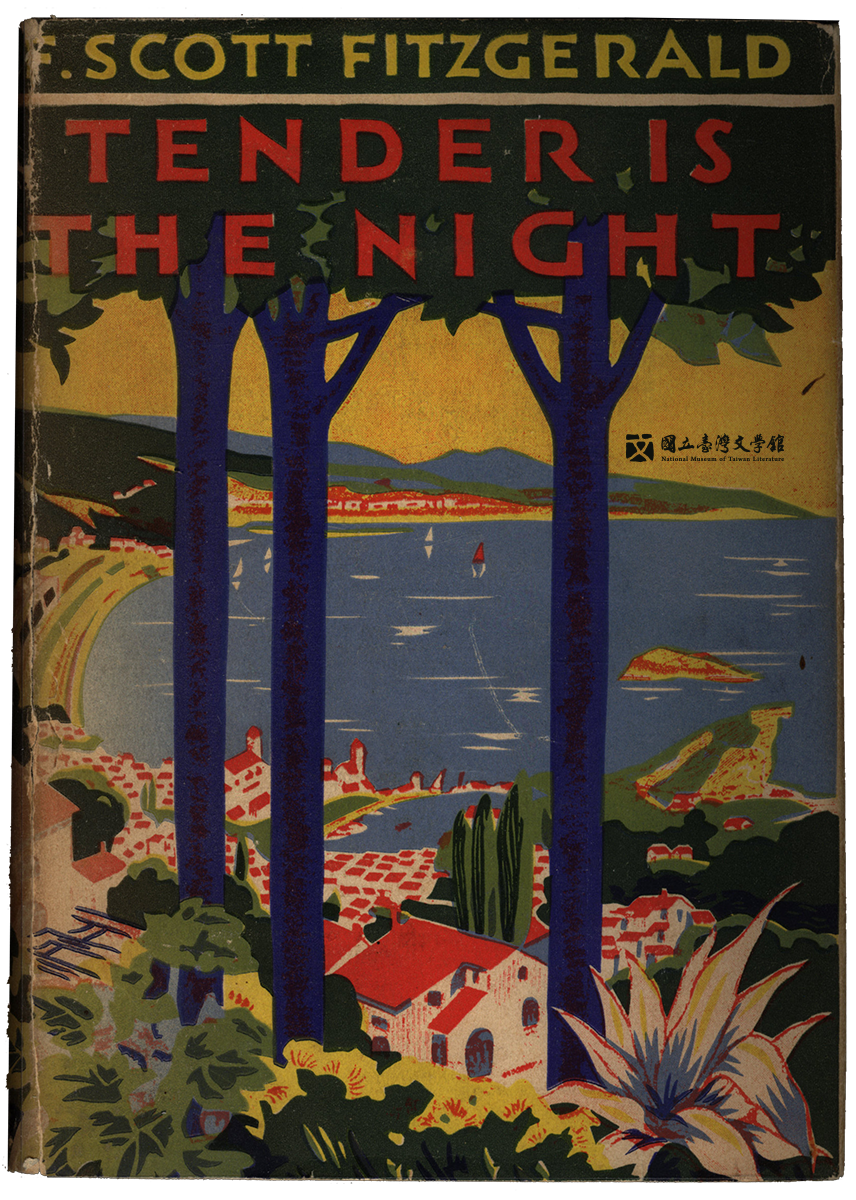
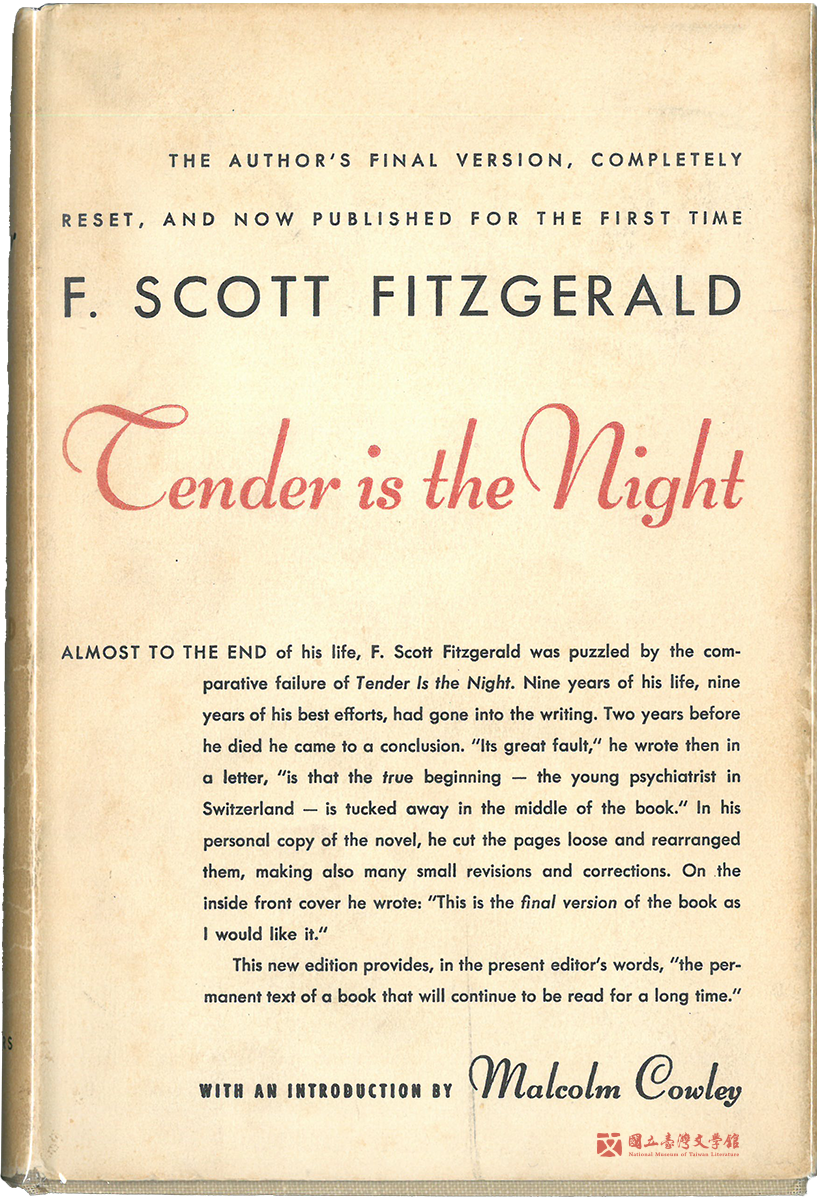
◪ First-edition cover of Tender is the Night: A Romance, 1934 / French version of Tender Is the Night,1953
(Courtesy of University of South Carolina)
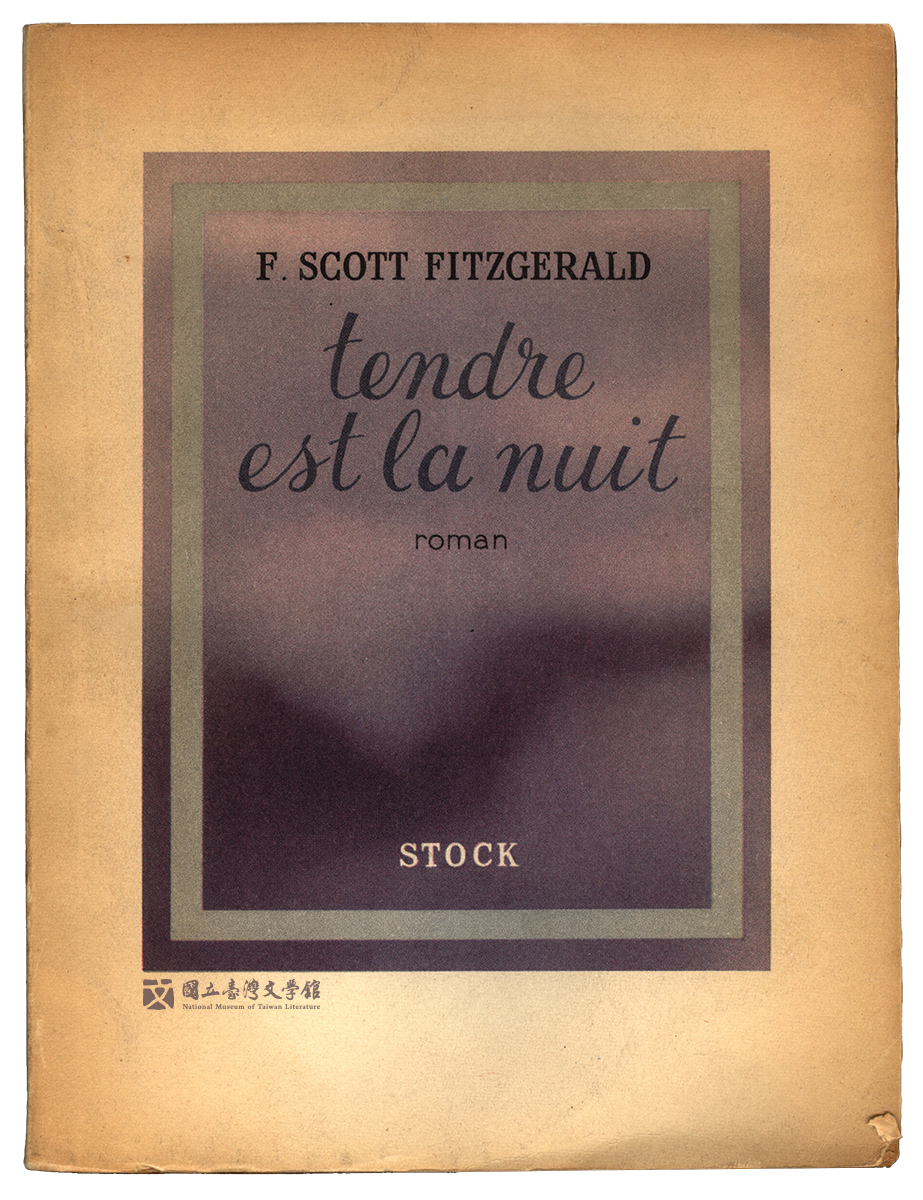
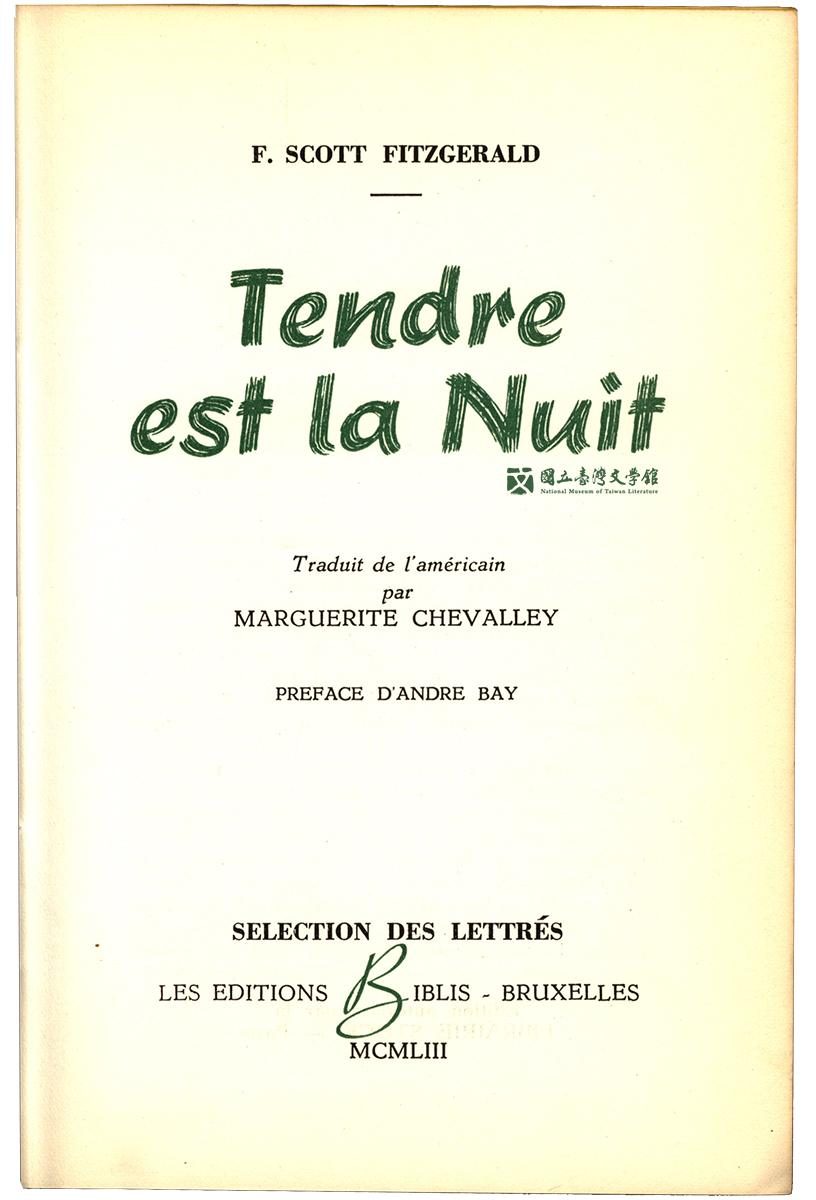
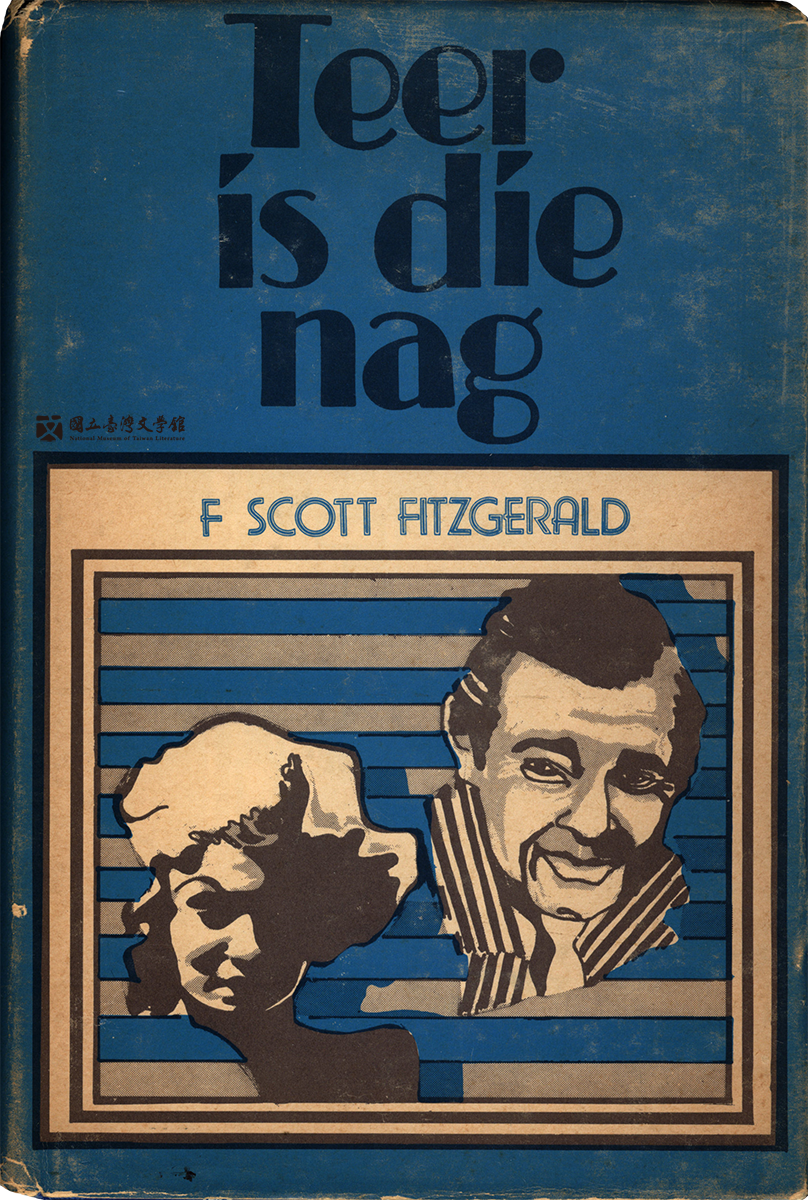
◪ French version of Tender Is the Night,1953 / French version of Tender Is the Night,1953 / Afrikaans version cover of Tender is the night,1968
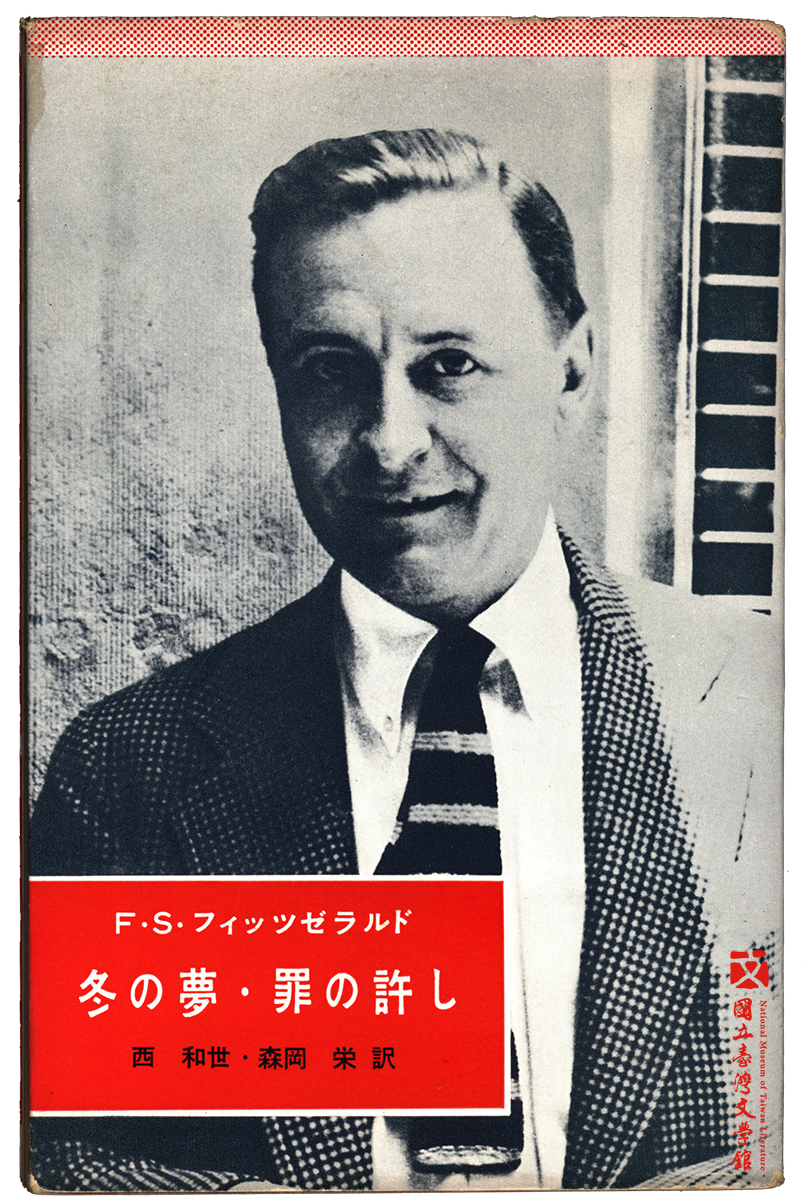
◪ Japanese version cover of Winter Dreams, 1956

◪ French version of The Crack-Up, 1963
(Courtesy of University of South Carolina)
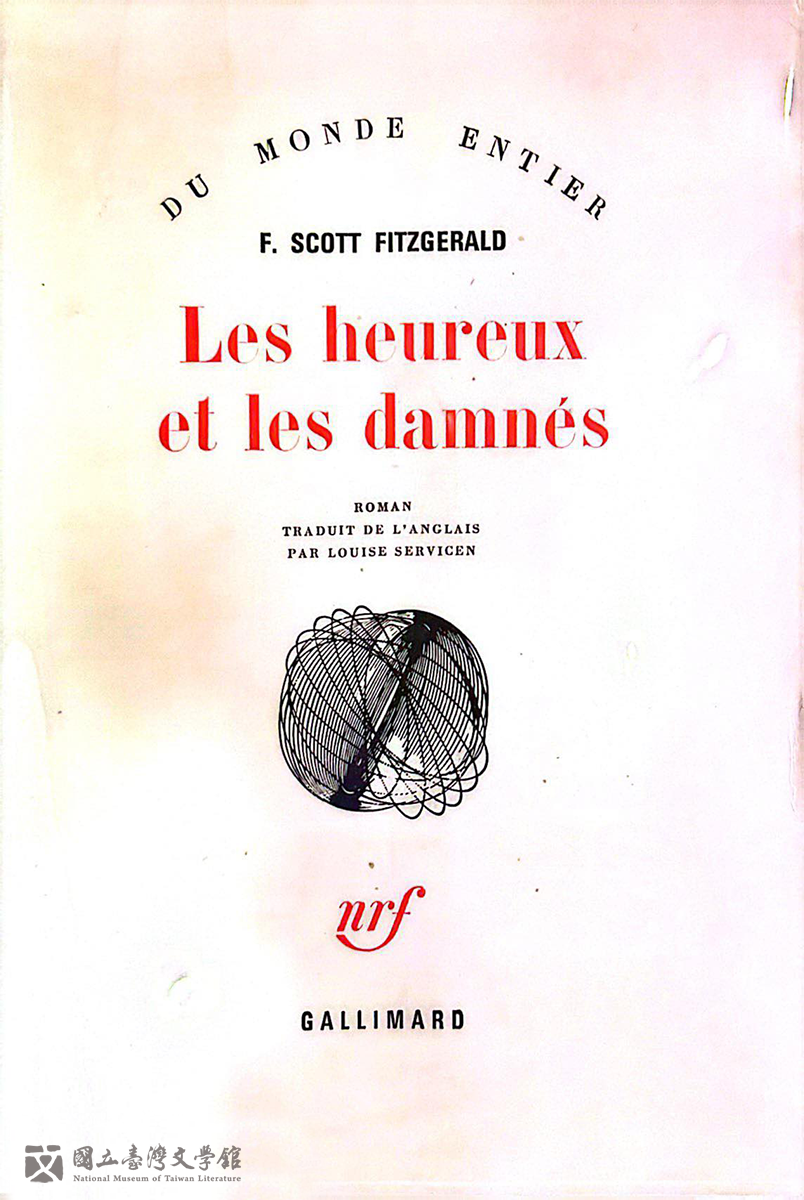
◪ French version of The Beautiful and Damned, 1964
(Courtesy of University of South Carolina)
William Faulkner:
Submerged in the Stream of Consciousness
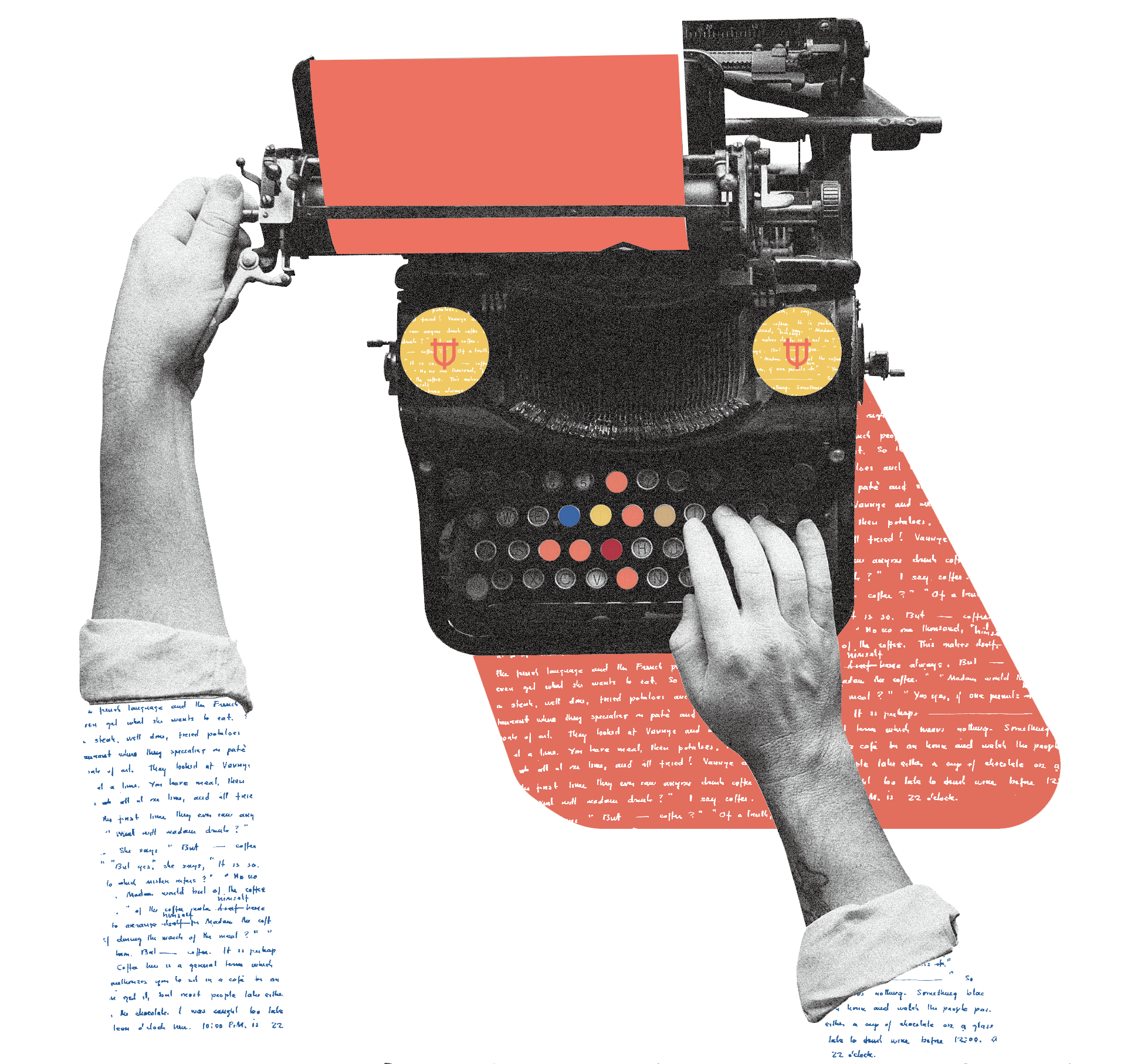
I believe that man will not merely endure: he will prevail……, but because he has a soul, a spirit capable of compassion and sacrifice and endurance.
——From William Faulkner's Nobel Prize Speech
Though opinions abound on the definition of "modernist" literature and oftentimes vary by geographical location, the literary movement has generally been perceived as a shift in literary themes and objects of depiction, transitioning from those of the external real world to the internal sensory world of human beings. In literature, this is conveyed through the collapse of traditional time and space. No longer believing in the objectivity of outer appearances and denying the existence of truth, modernist writers turned inward to search for "reality" within their inner worlds. A classic example is James Joyce's Ulysses. The first six chapters not only use the conventional third-person past tense to recount past events, but also experimentally incorporate first-person present tense. Moreover, these differing perspectives are expressed through two main characters.
Modernist writers valued experimentation in language style and creative technique. The most notable of these is "stream of consciousness," which distorts and transforms external reality. In the last chapter of Ulysses, Joyce depicts the streaming consciousness of the female protagonist by interweaving past and present tense and using only two commas throughout the entire chapter. Stream of consciousness was also closely related to the development of 19th-century American psychology. William Faulkner would later use it to the full in his works.

You cannot swim for new horizons until you have courage to lose sight of the shore.
——William Faulkner, The Mansion
Faulkner possessed tremendous creative vitality despite encountering many hardships (including emotional conflicts and financial poverty). In his over forty-year-long career, he wrote 19 novels, 125 short stories, 17 movie scripts (nine of which were made into major films), and one play. Faulkner was never a studious student and dropped out of the University of Mississippi after one year. Fortunately, at the age of 17, he met Phil Stone, who was four years older and became a valuable mentor and friend. Stone, who later became a lawyer, had read Ulysses as it was serialized in the literary magazine The Little Review while studying at Yale Law School and introduced the work to Faulkner. Many have noted that this connection likely led Faulkner and Joyce to share certain literary characteristics, such as their extensive use of inner monologues, stream of consciousness, and their fondness for creating their own vocabulary.

◪ First-edition cover of The Sound and the Fury by William Faulkner, 1929
Published by Jonathan Cape and Harrison Smith
Ernest Hemingway:
 The Passionate and Lonely Adventurer
The Passionate and Lonely Adventurer
The dignity of movement of an iceberg is due to only one-eighth of it being above water.
——Ernest Hemingway, Death in the Afternoon
Hemingway's early works mostly drew upon his childhood and adolescent years in Michigan and his experiences in World War I. Later, his career as a journalist took him through a period of abundant life experiences. Whether it was skiing in Austria, watching bullfights in Spain, hunting game in Africa, or chasing marlin on his yacht Pilar, Hemingway funneled all of them into his novels and essays. The results were a collection of essays on bullfighting entitled Death in the Afternoon, a collection of essays on hunting entitled The Green Hills of Africa, and the Pulitzer Prize-winning novel The Old Man and the Sea.
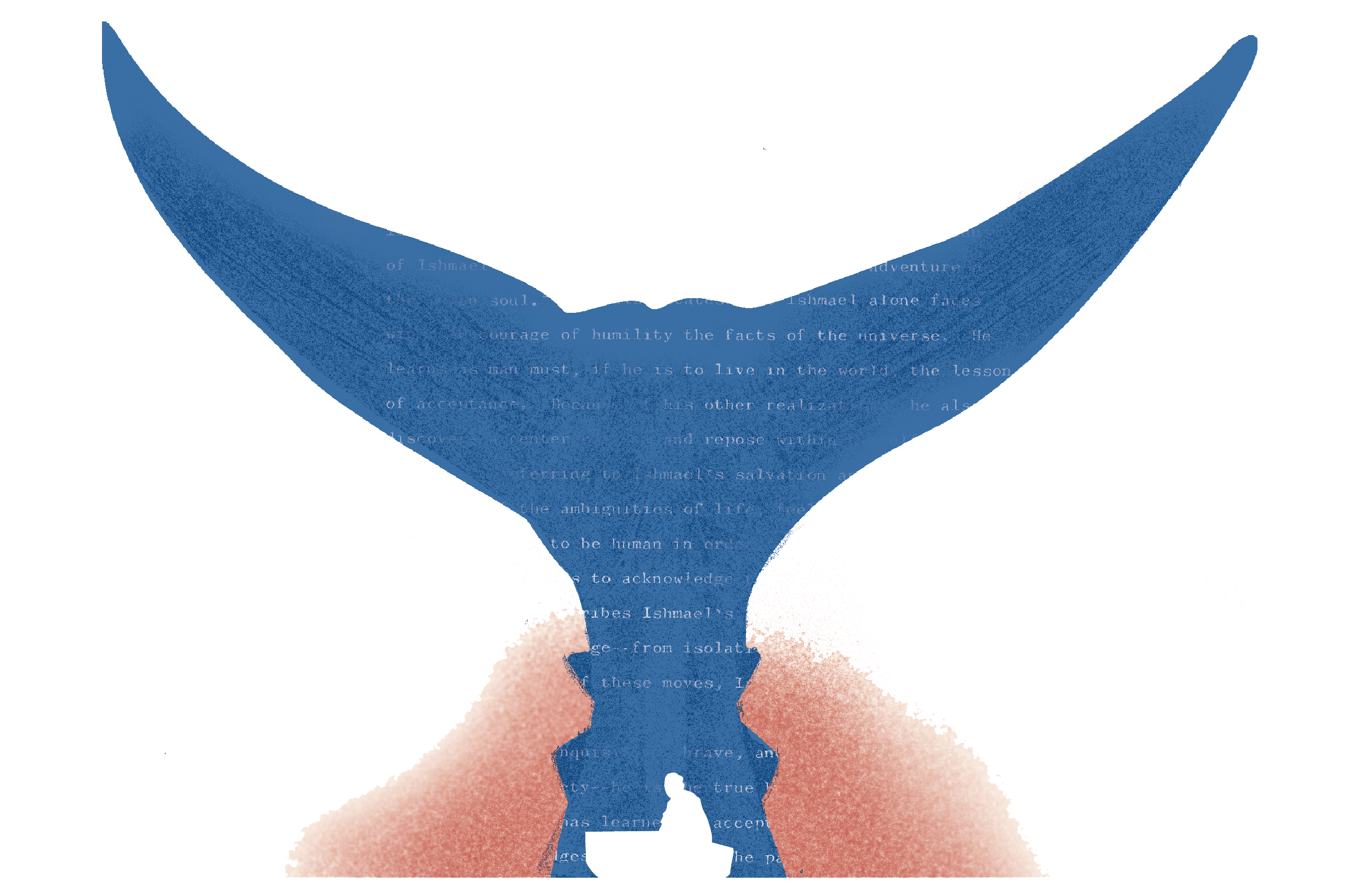
But man is not made for defeat ……
A man can be destroyed but not defeated.
—— Ernest Hemingway, The Old Man and the Sea
However, underlying Hemingway's sharp and simple style were his fears and frustrations about death and aging. His short stories such as "Indian Camp," "The Big Two-hearted River," "The Snows of Kilimanjaro," and "The Short Happy Life of Francis Macomber," are full of dramatic tension fueled by an intense anxiety over life setbacks and how they rob an individual of their masculine traits.
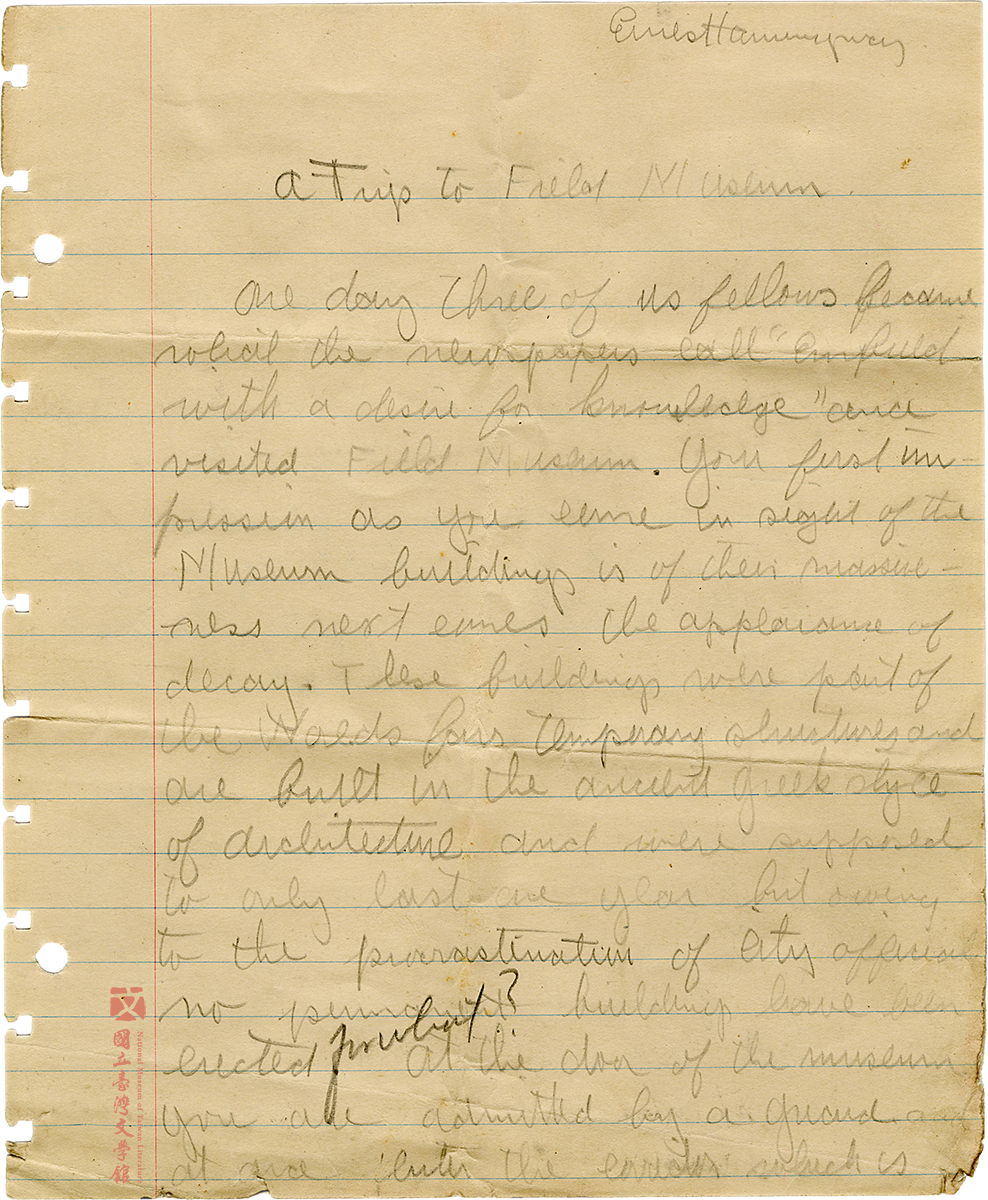
◪ "A Trip to the Field Museum"by Ernest Hemingway, circa1910.
A description of a visit to the Field Museum with friends. Includes a teacher's comment. (Courtesy of Oak Park Public Library)
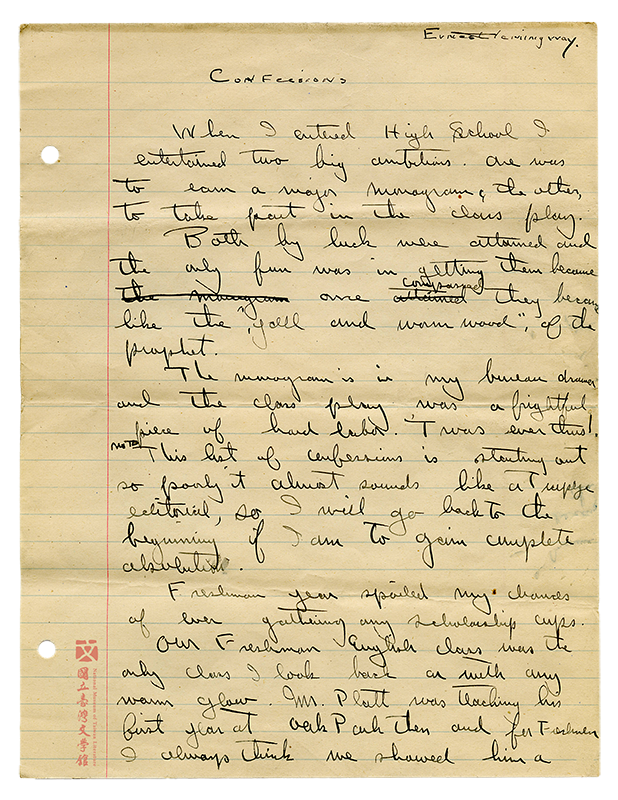
◪ "Confessions"by Ernest Hemingway, circa1910
This is an account of Ernest Hemingway's misdeeds and misfortunes throughout his high school career and includes a note from his teacher.(Courtesy of Oak Park Public Library)
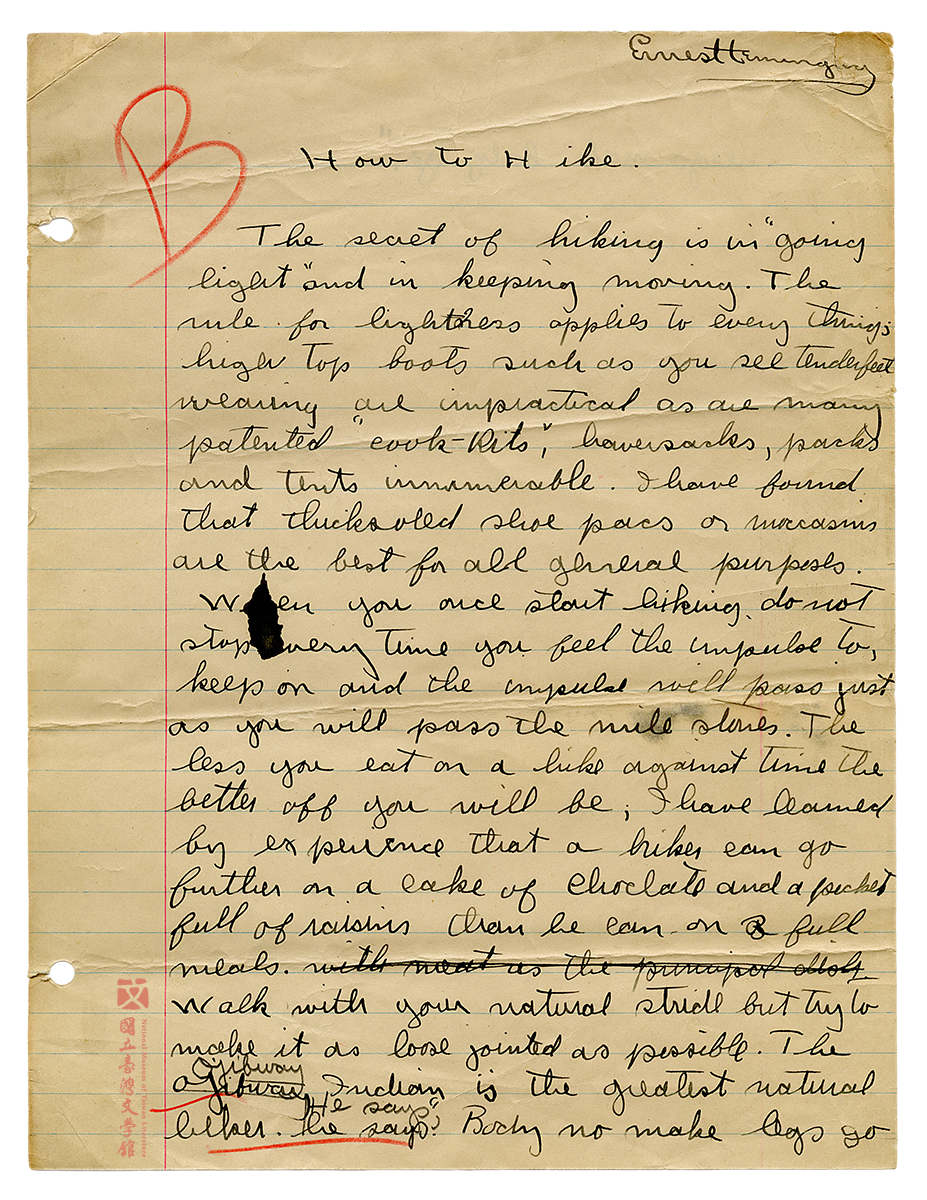
◪ "How To Hike"by Ernest Hemingway, circa 1910
A description of how to go on a hike with comments made by the teacher.(Courtesy of Oak Park Public Library)
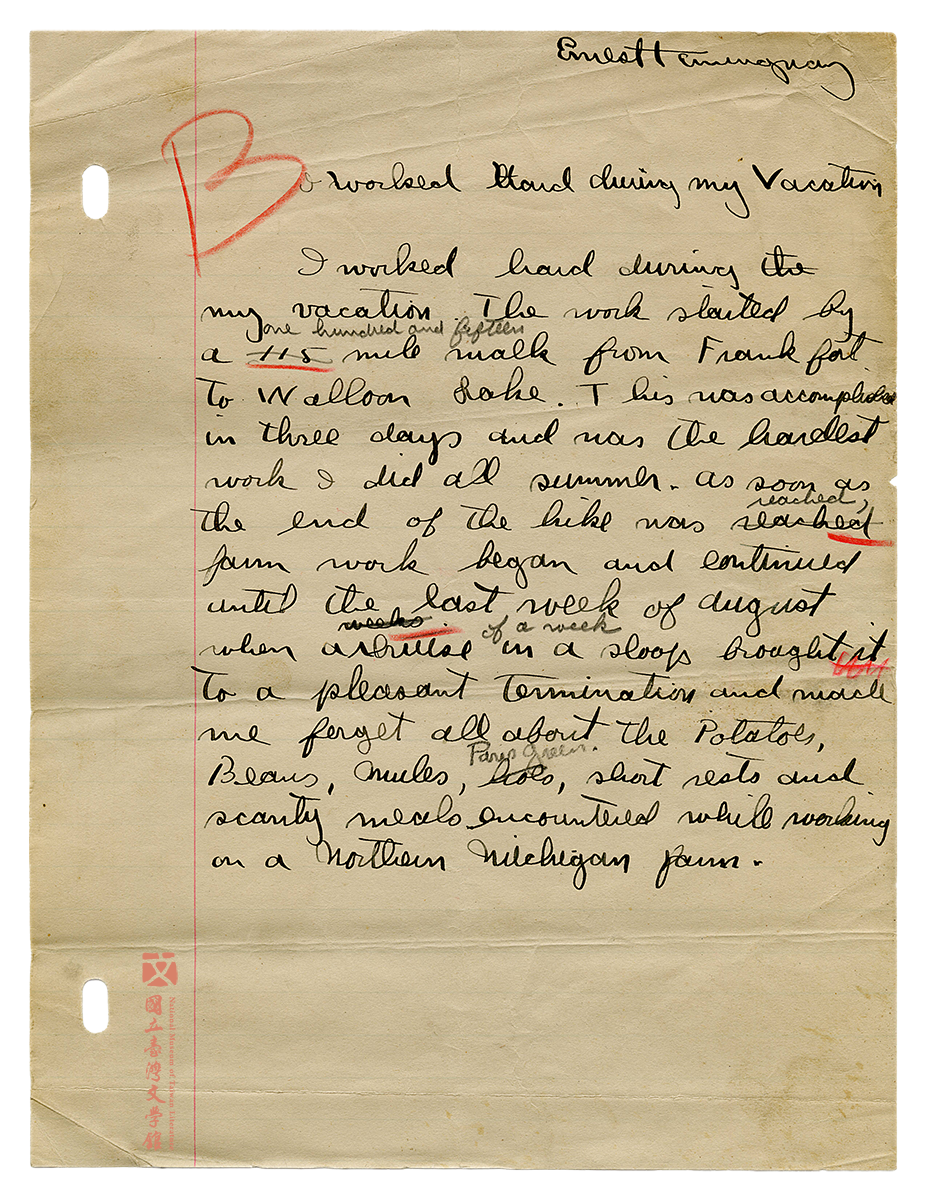
◪ "I Worked Hard During My Vacation"by Ernest Hemingway, circa 1910
A short work on how Ernest Hemingway spent his summer working hard on the farm in Michigan.(Courtesy of Oak Park Public Library)
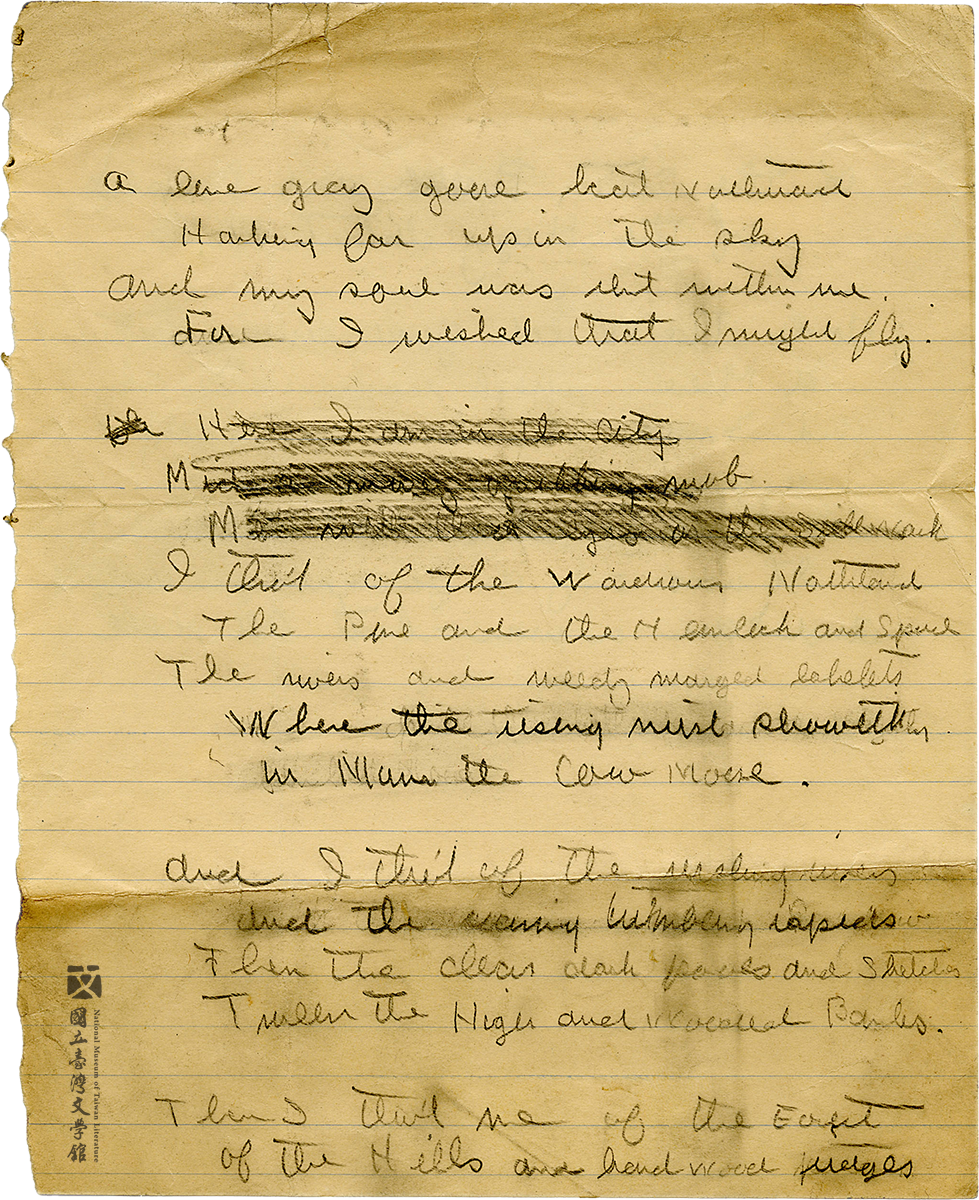
◪ "Untitled work"by Ernest Hemingway, circa 1910
An untitled work about the northern woods by Ernest Hemingway.(Courtesy of Oak Park Public Library)

◪ Ernest Heminway's fishing trip in Horton Bay, 1918.
(Courtesy of The Knox College)
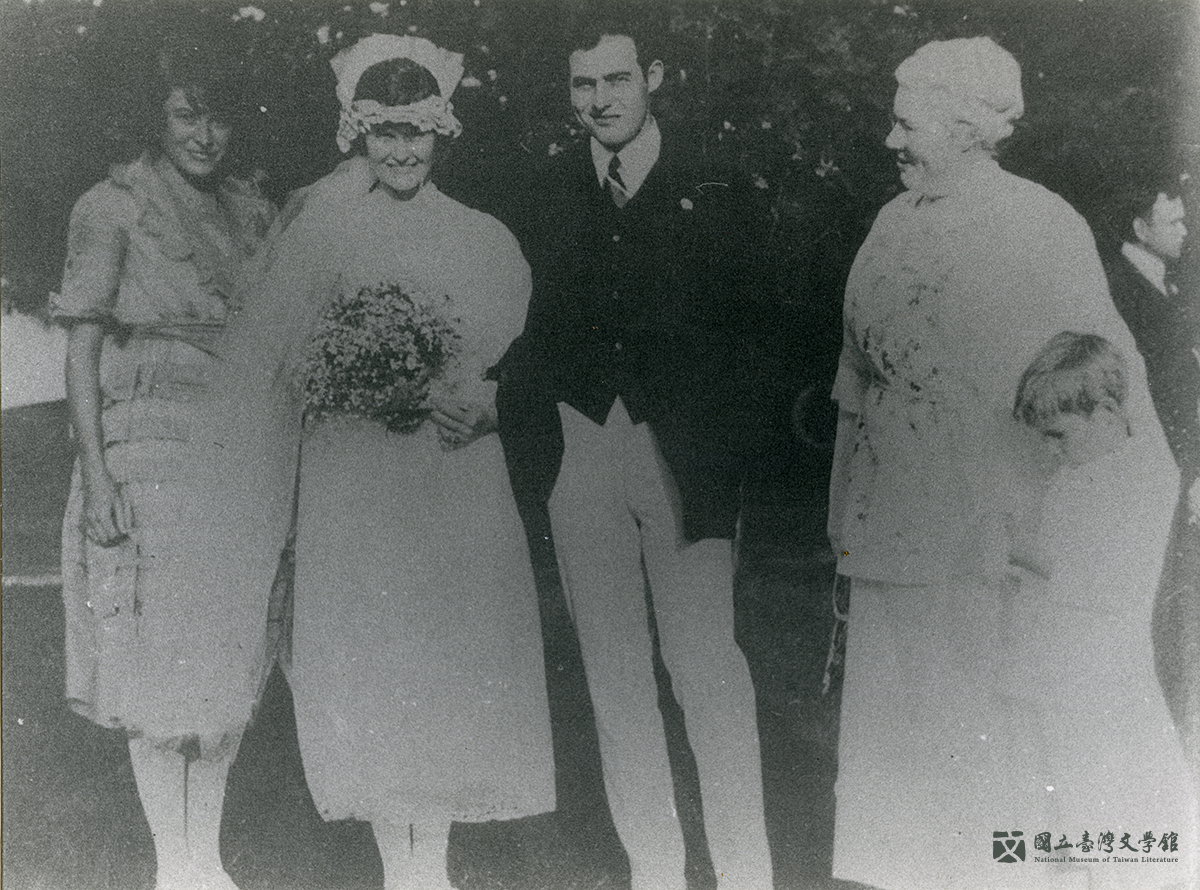
◪ Wedding of Ernest Hemingway with Hadley Richardson, 1921.
(Courtesy of The Knox College)
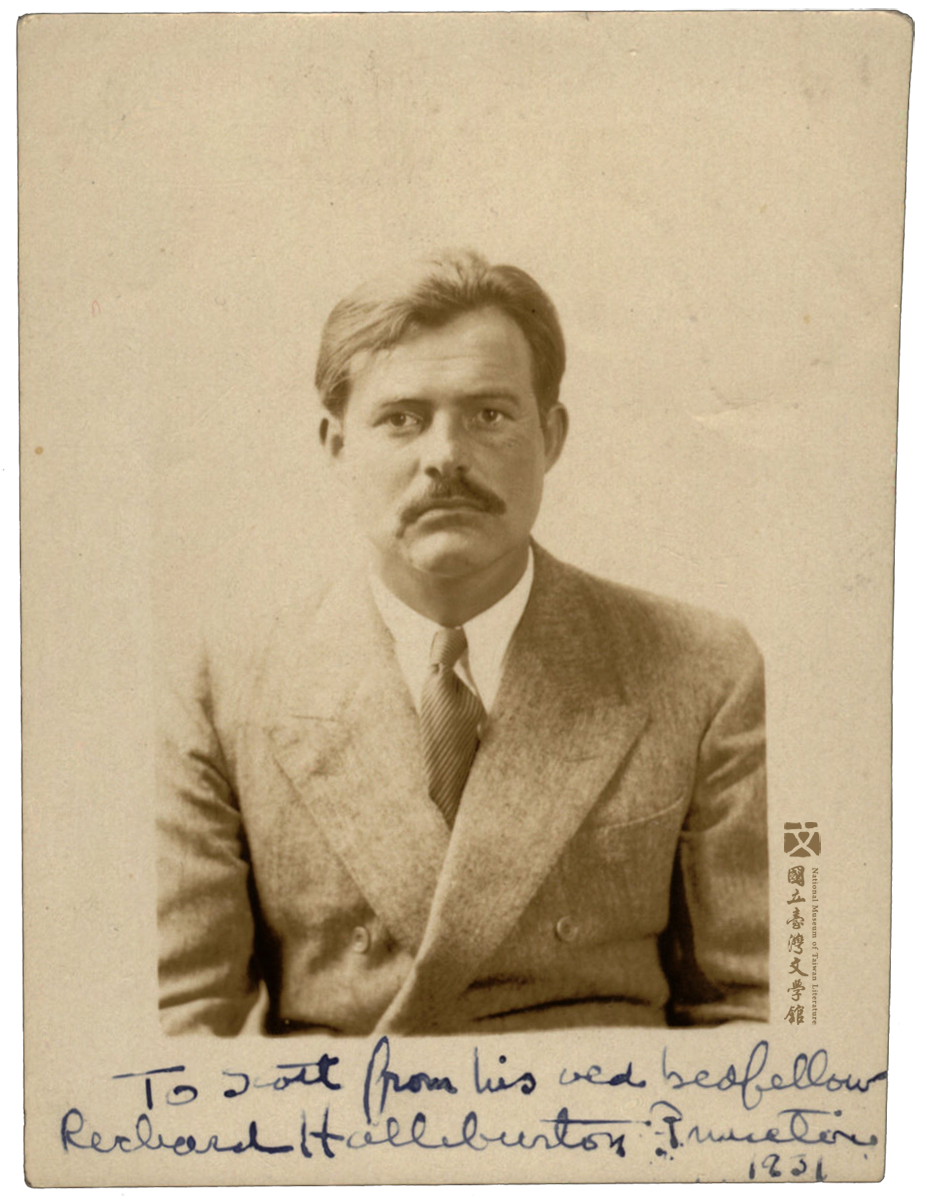
◪ Photograph portrait of Ernest Hemingway : inscribed to F. Scott Fitzgerald by Hemingway, 1931
(Courtesy of University of South Carolina)
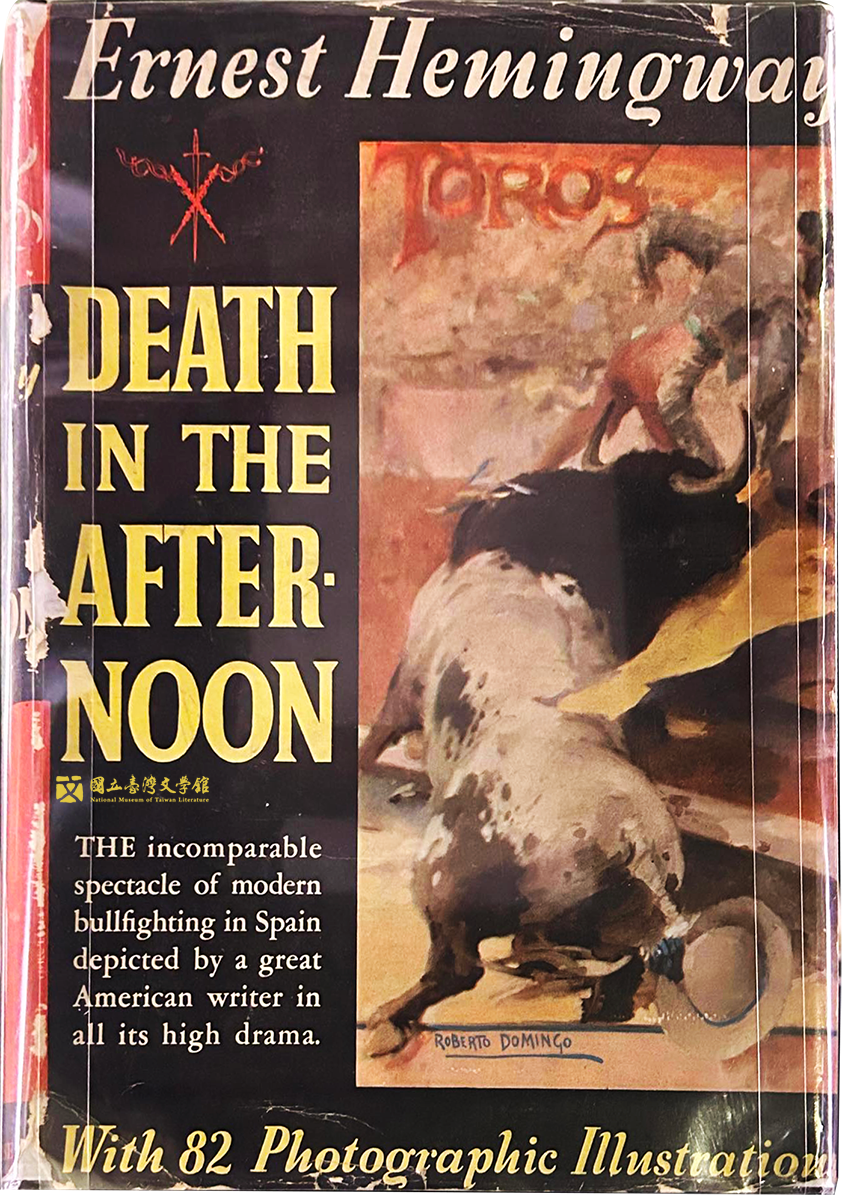
◪ Death in the Afternoon by Ernest Hemingway,1932
A non-fiction book written by Ernest Hemingway about the ceremony and traditions of Spanish bullfighting. It provides a look at the history and the Spanish traditions of bullfighting. It also contains a deeper contemplation on the nature of fear and courage.
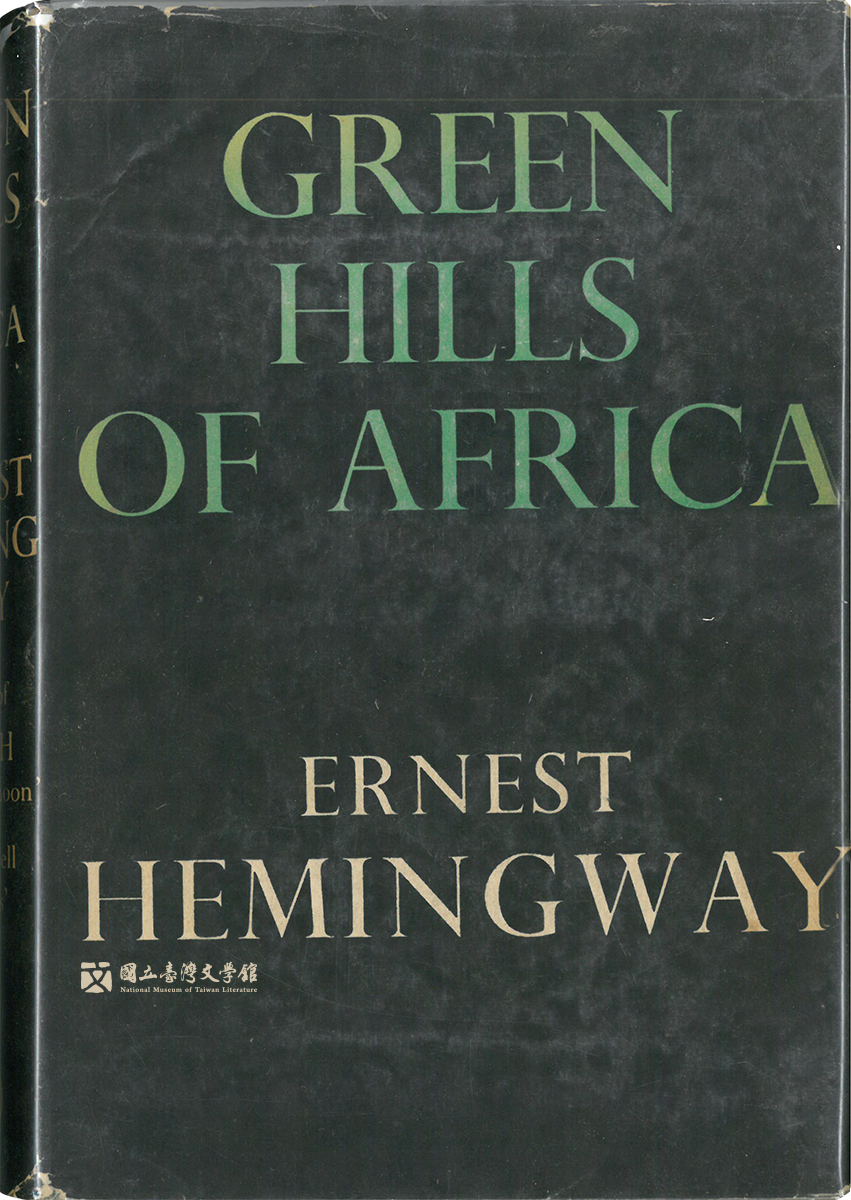
◪ Green Hills of Africa by Ernest Hemingway,1936
With financial aid from his second wife Pauline Pfeiffer's uncle, Hemingway went with Pauline to Kenya for safari from the end of 1932 to early 1933. He wrote essays on the basis of this trip and collected them in the book.
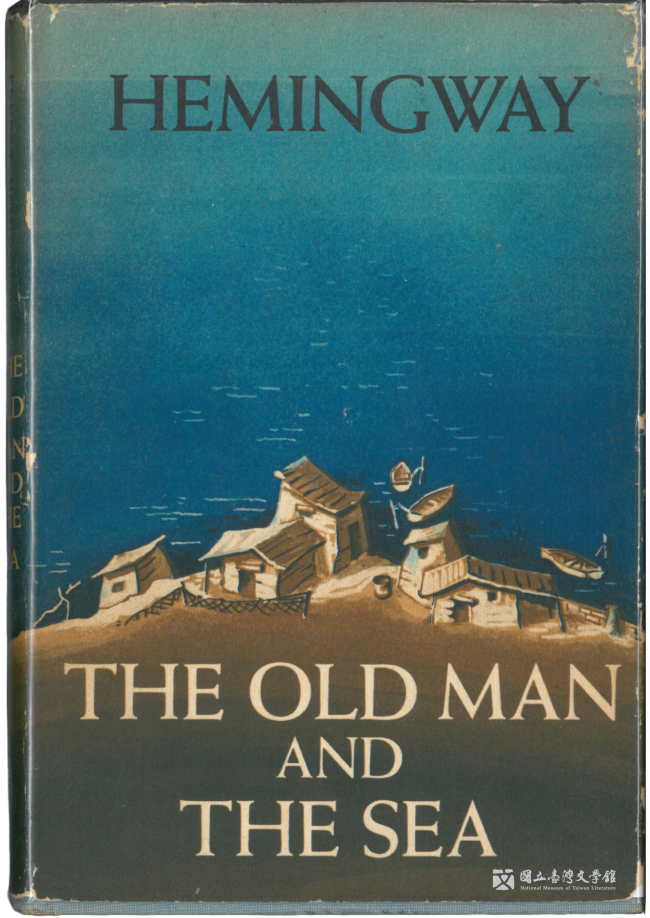
◪ The Old Man and the Sea by Ernest Hemingway,1952
Written by Hemingway about an aging fisherman Santiago who catches a giant marlin after a long struggle, but then loses his bounty to sharks. The novella was highly anticipated and was released to record sales. The novel won his Pulitzer.
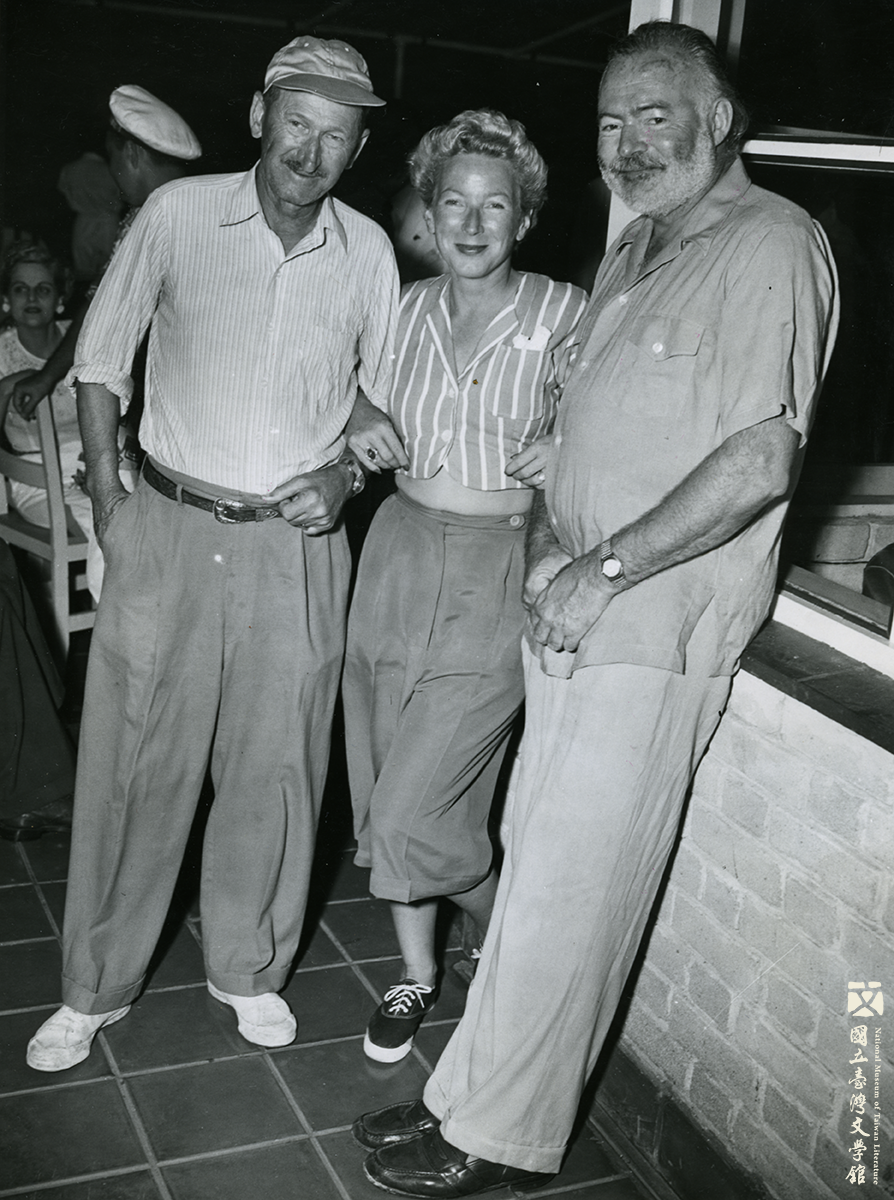
◪ Ernest Hemingway with Mary&Taylor Williams in Havanna, 1957.
(Courtesy of The Knox College)

◪ Clay Pigeons
These clay pigeons remain from a shipment ordered by Ernest Hemingway in 1928 and sent from St. Louis, Mo to Piggott. He used the clays for target practice outside the barn during his first visit to the home of his in-laws, Paul and Mary Pfeiffer.(Courtesy of Hemingway-Pfeiffer Museum and Educational Center.)
Hemingway's Literary Travels Around the World
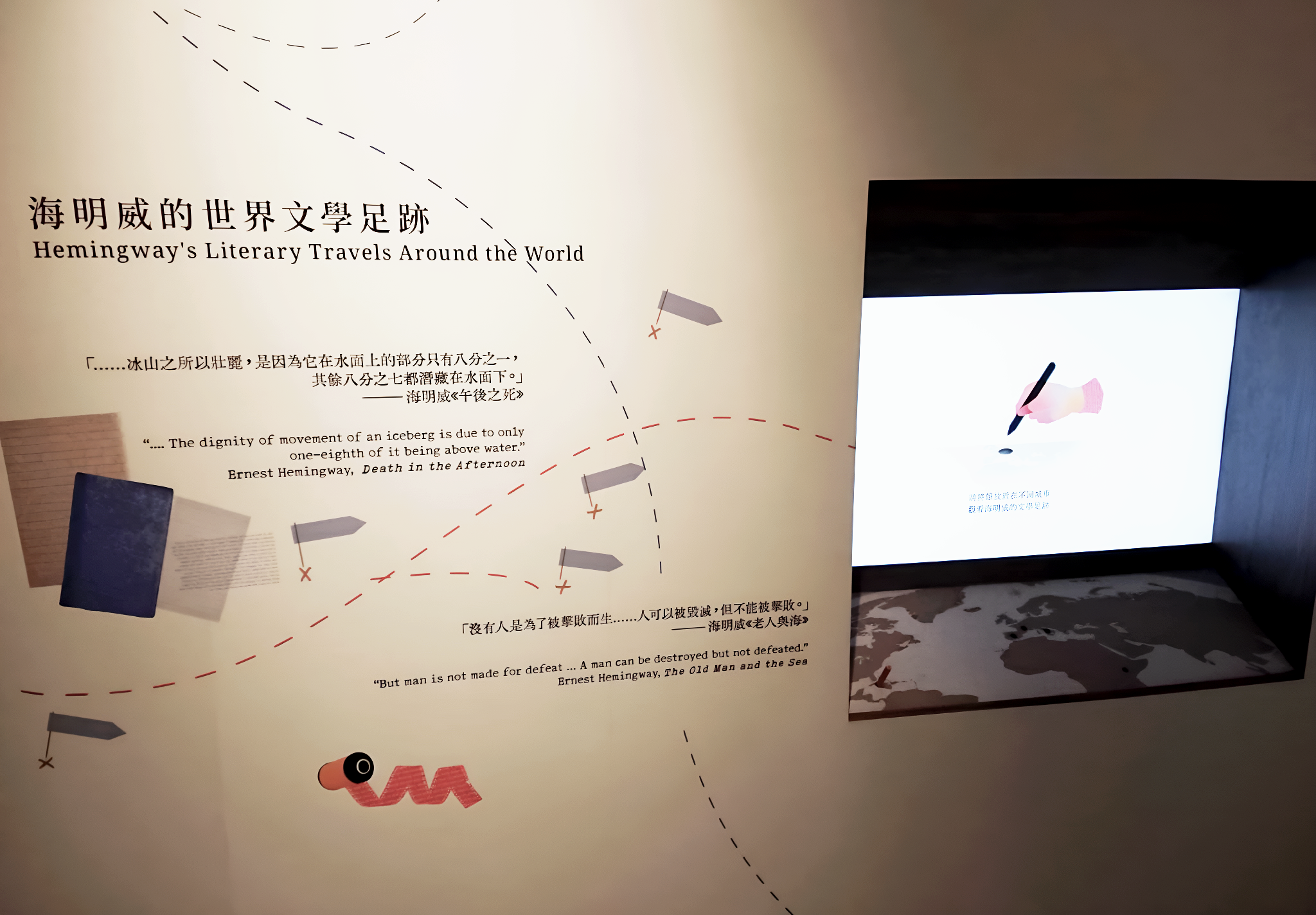
A Generation that Once Roared is Lost
In the epigraph of his novel The Sun Also Rises, Hemingway quotes his literary mentor Gertrude Stein: "You are all a lost generation." This quote became synonymous with the era in which he and Fitzgerald lived. Hemingway and Fitzgerald became close friends in 1925 at the Dingo Bar in Paris. Even before they met, Fitzgerald had written to his editor about Hemingway, referring to him as a promising young writer with genuine talent and whose works reflected pure novelistic skill. As for Hemingway, he commented in his memoir A Moveable Feast that after reading The Great Gatsby, he felt that no matter how outrageous Fitzgerald behaved, he was obliged to help him as a good friend because, "if he could write a book as fine as The Great Gatsby, I was sure that he could write an even better one."
After several years of friendship, the two novelists eventually grew apart due to Fitzgerald's downturn in life. By the 1930s, they were almost strangers. During the hay day of Hemingway's literary reputation, Fitzgerald fell to his lowest point of life, not only suffering poor book sales, but also dealing with the long-term hospitalization of his wife Zelda due to her mental illness. To pay for his wife's medical expenses and his daughter's living expenses (in addition to his own alcohol expenses), Fitzgerald was forced to leave for the West Coast and become a scriptwriter in Hollywood.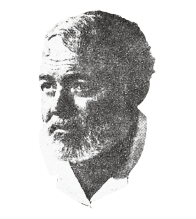
I use the oldest words in the English language. People think I'm an ignorant bastard who doesn't know the ten-dollar words. I know the ten-dollar words. There are older and better words which if you arrange them in the proper combination you make it stick. Remember, anybody who pulls his erudition or education on you hasn't any.
——From Ernest Hemingway's 1950 interview in The New Yorker
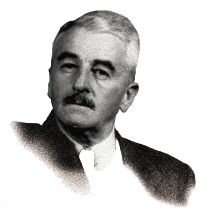
……he has no courage, has never crawled out on a limb. He has never been known to use a word that might cause the reader to check with a dictionary to see if it is properly used.
——From William Faulkner's 1951 interview in The Western Review
